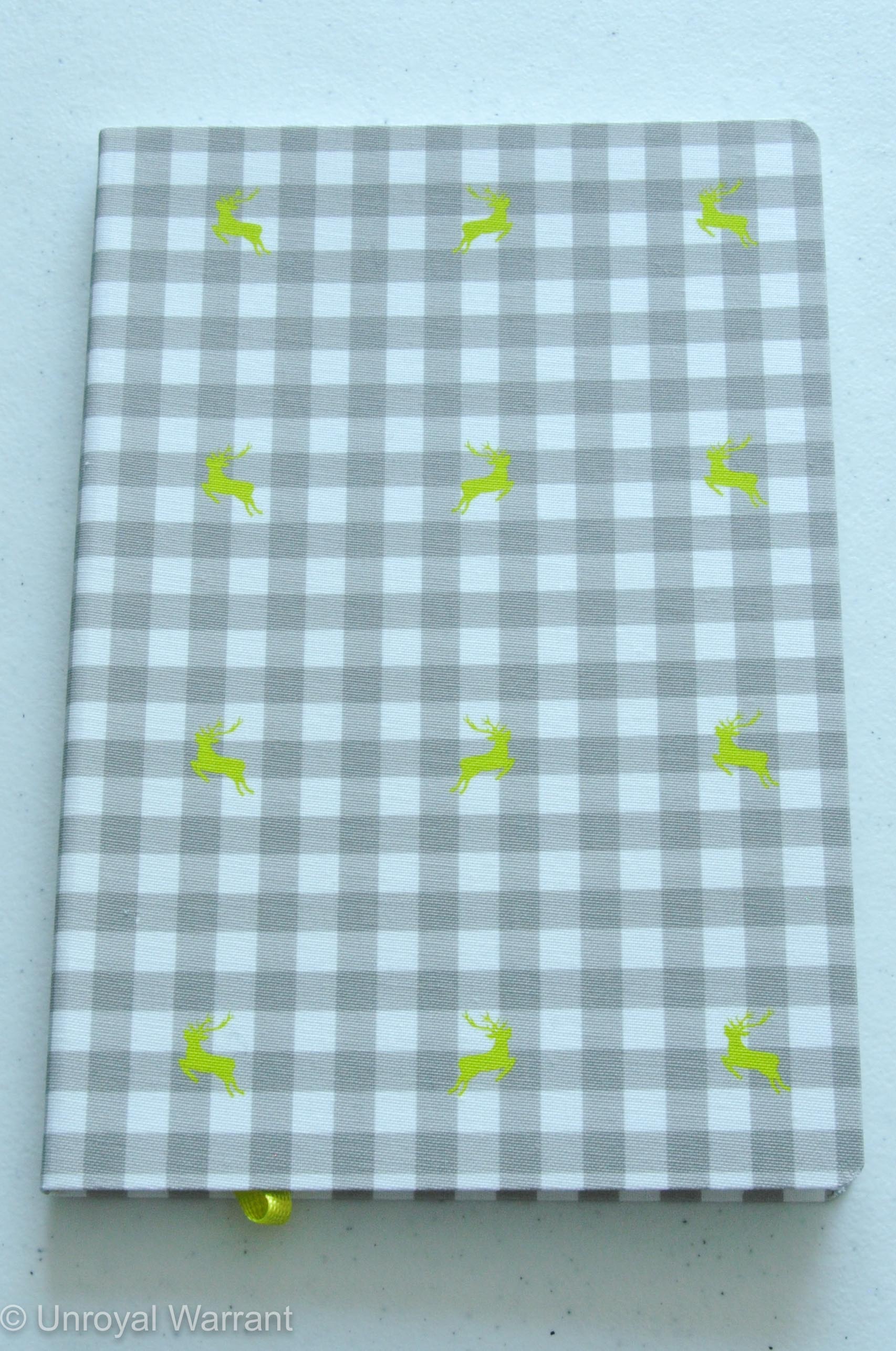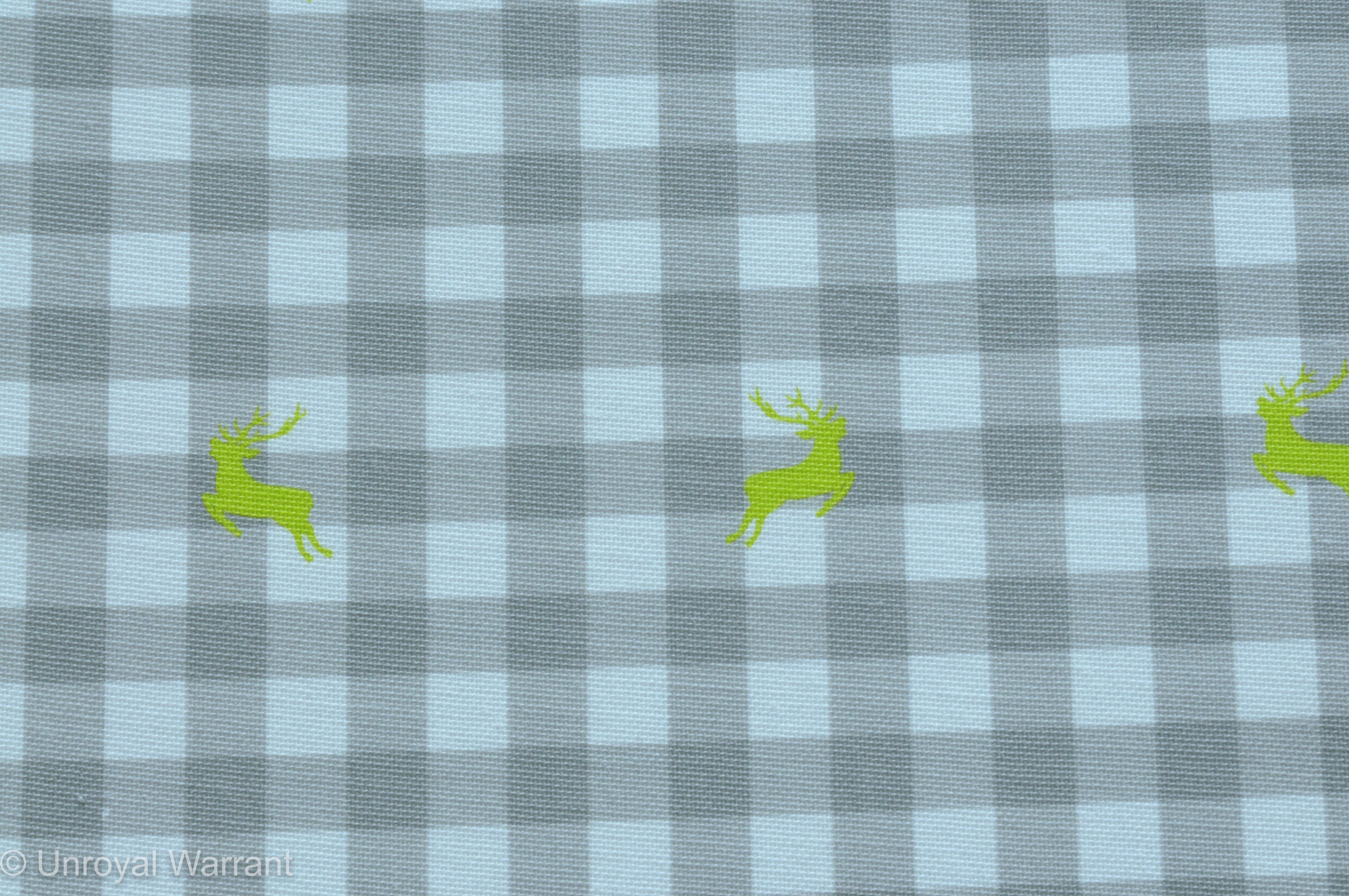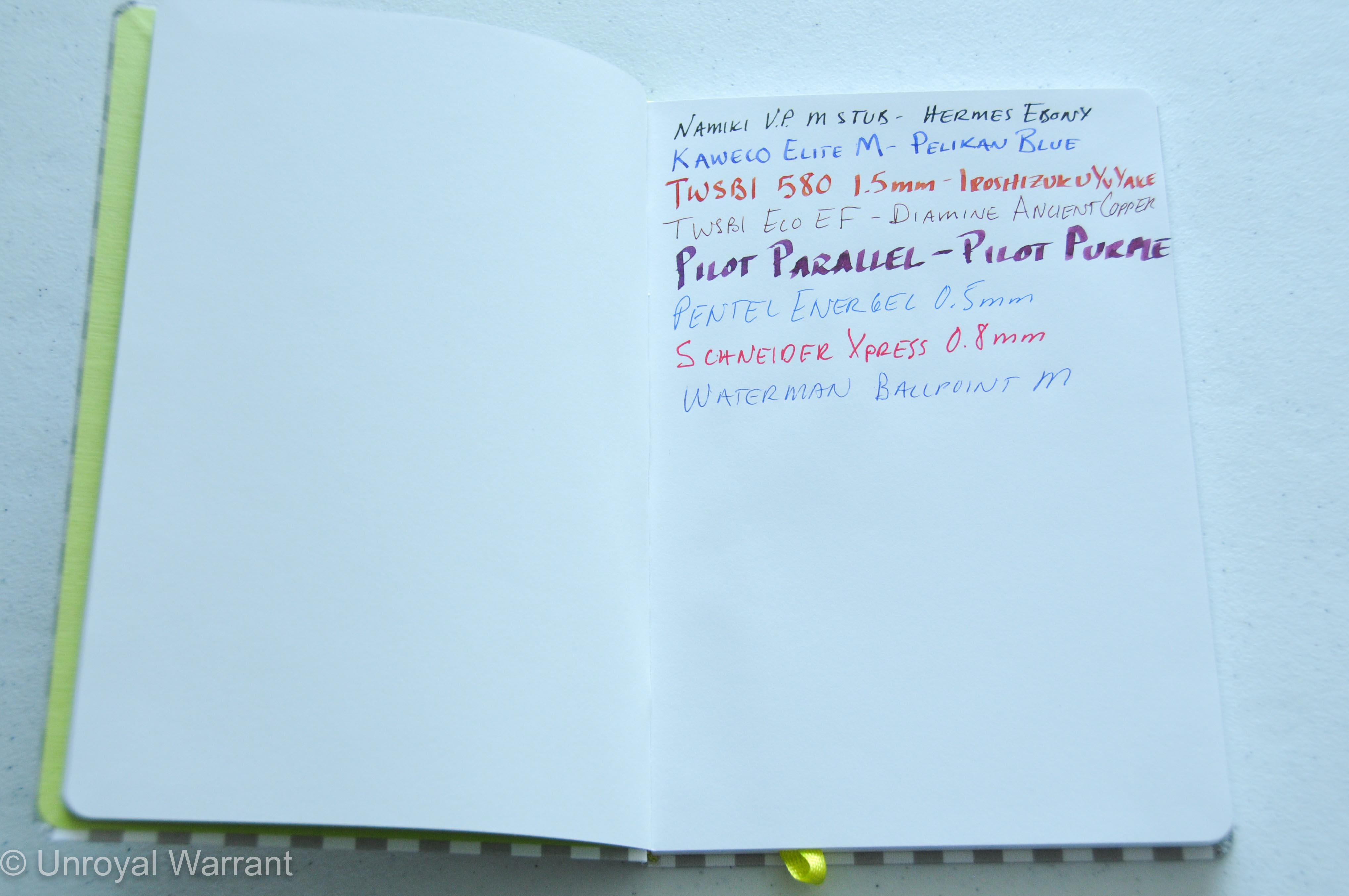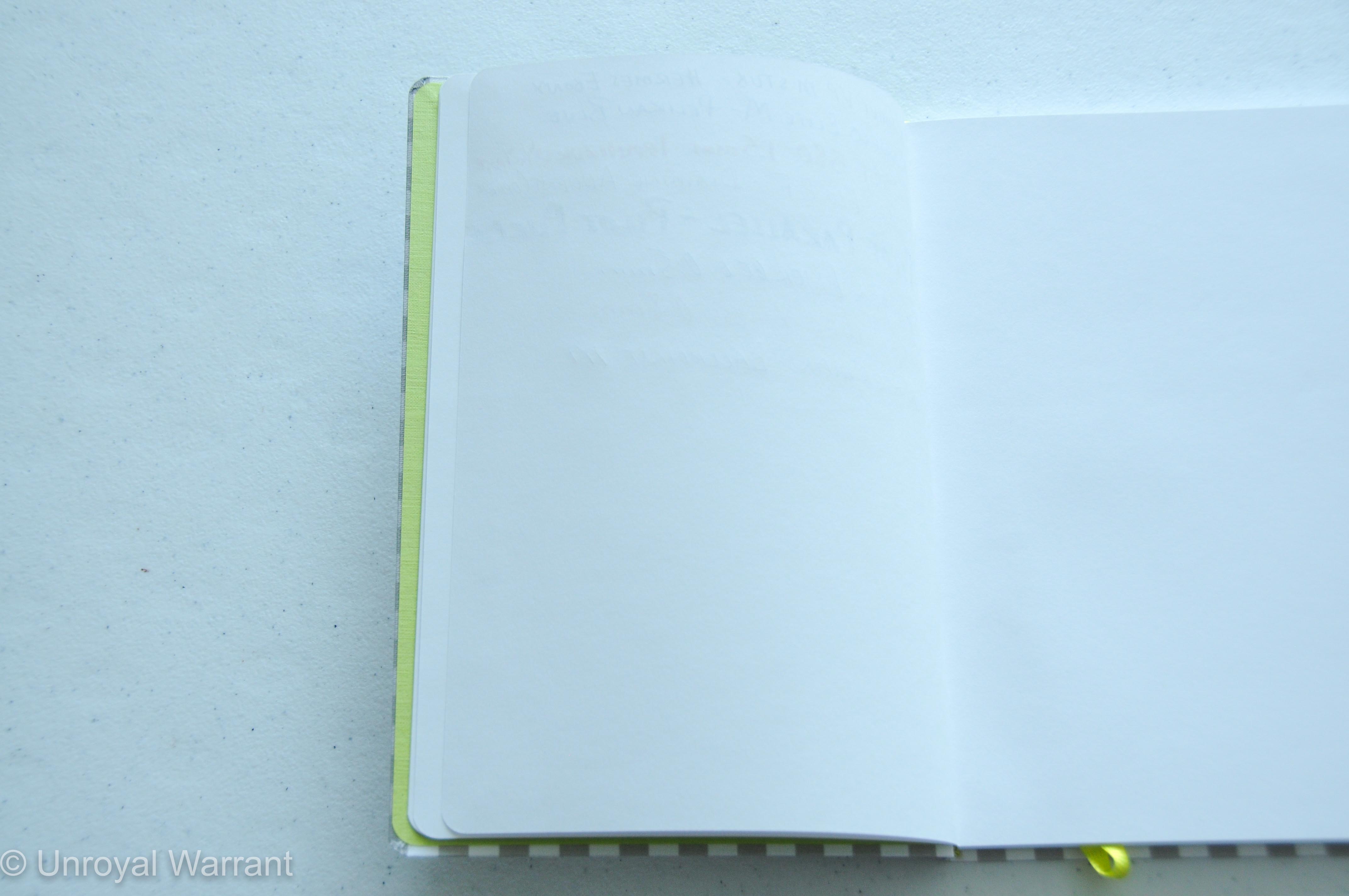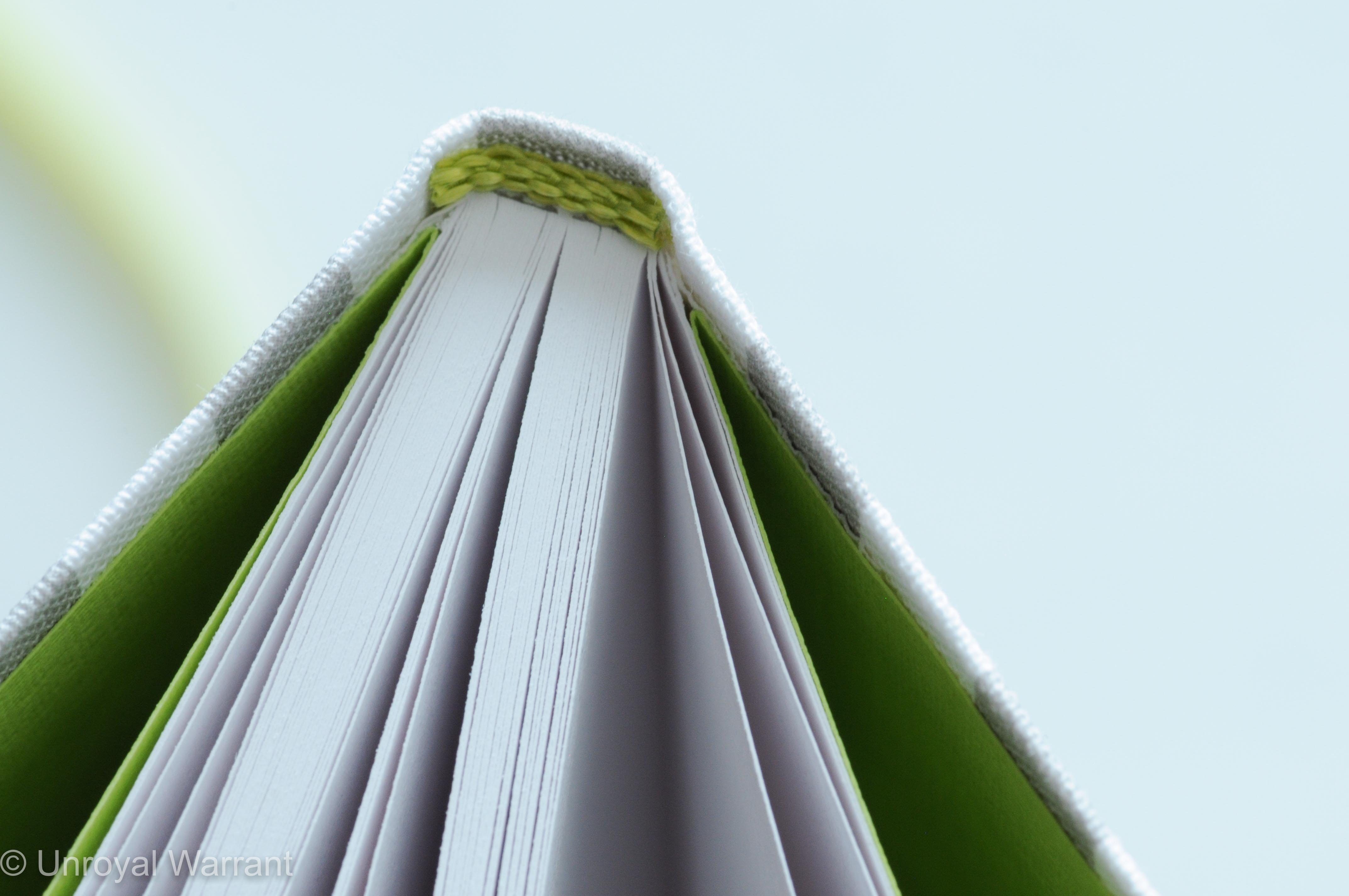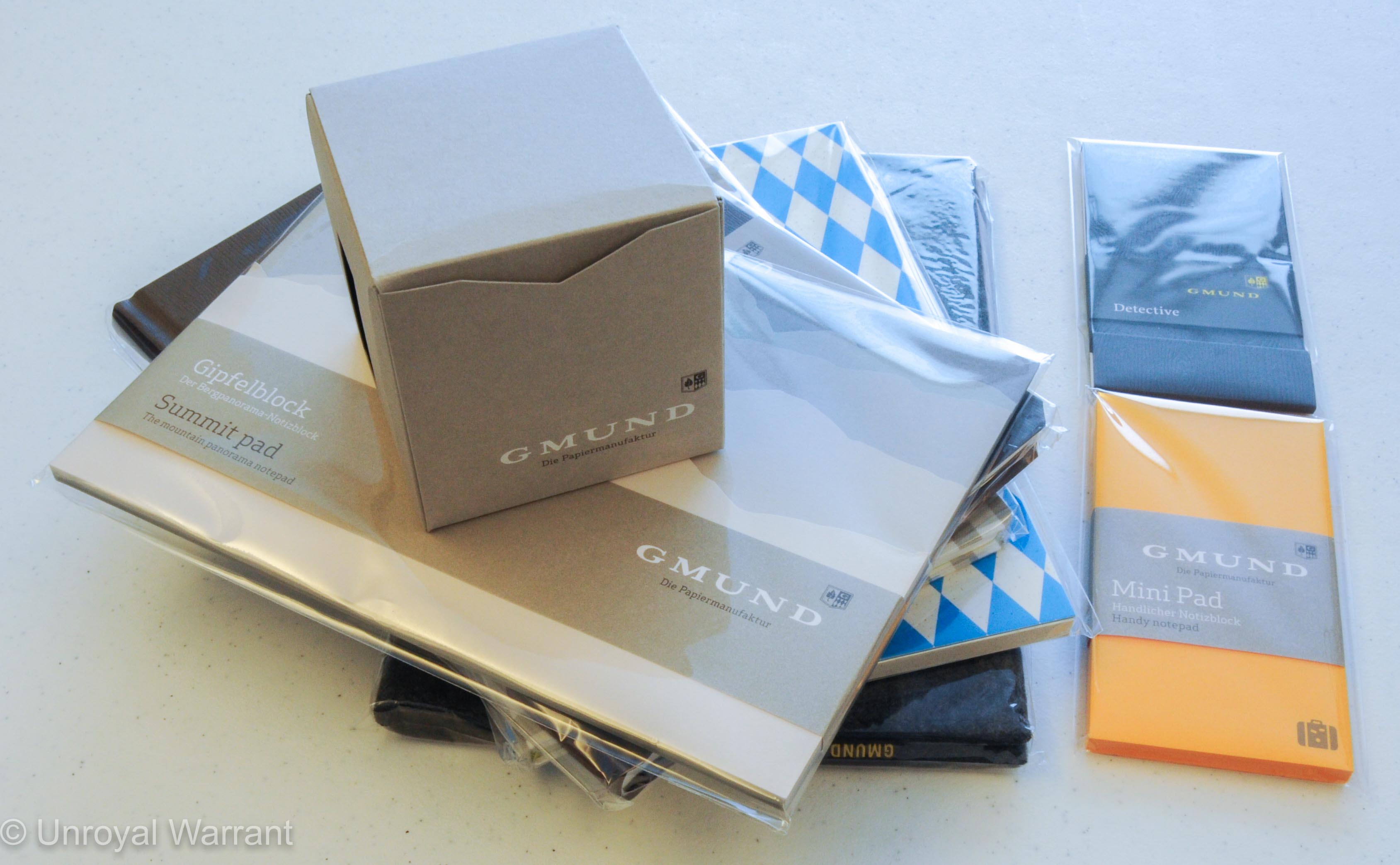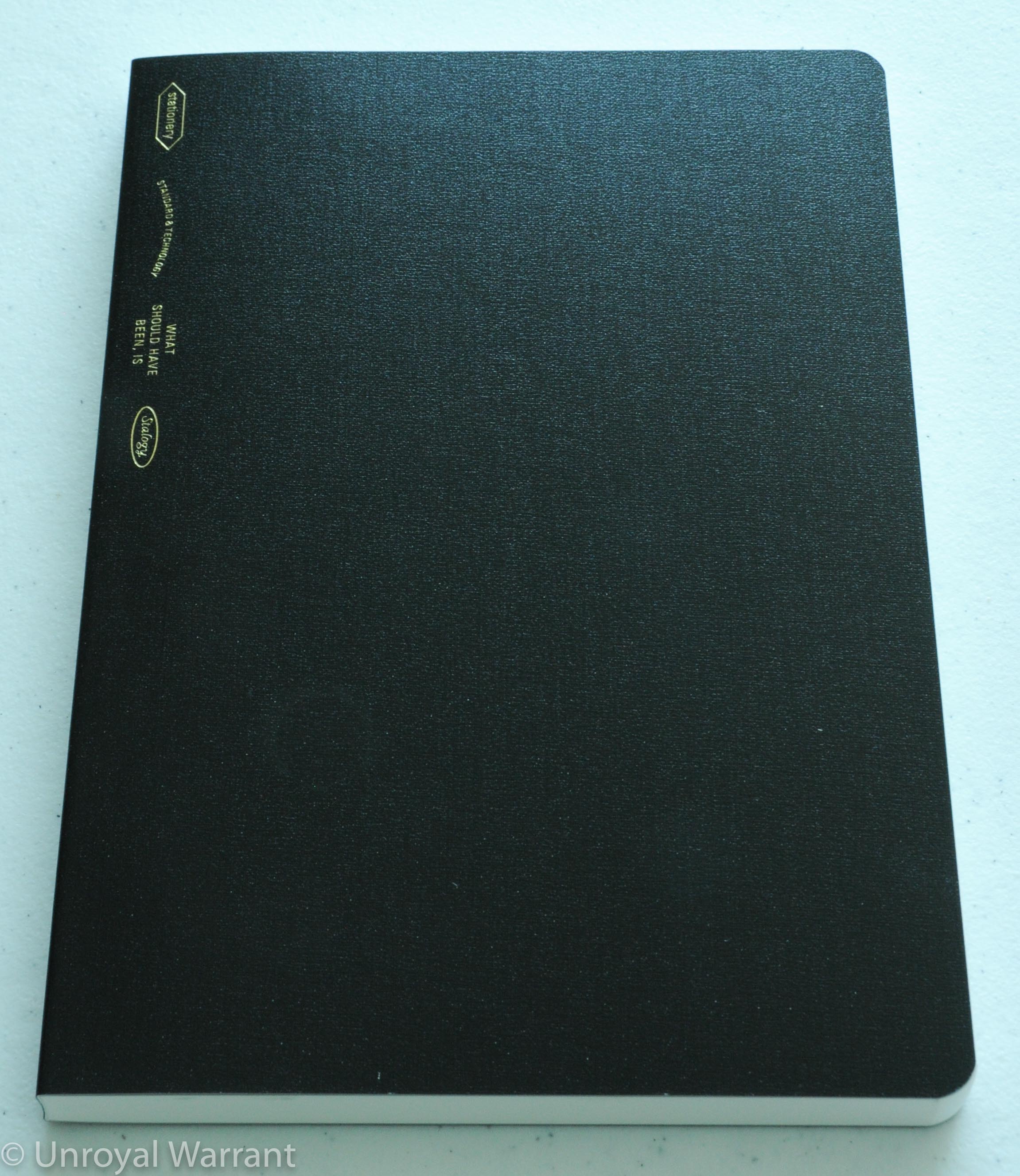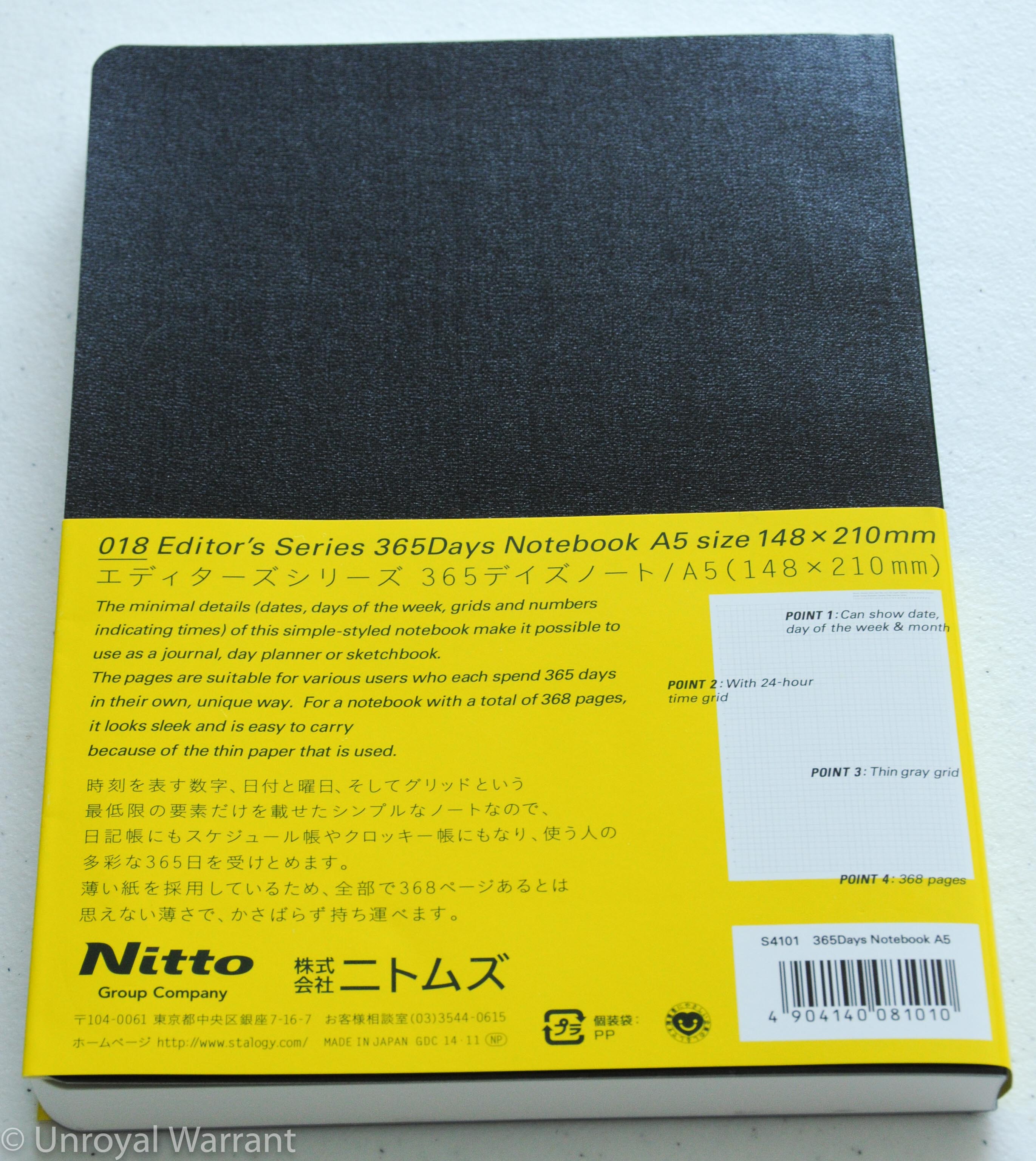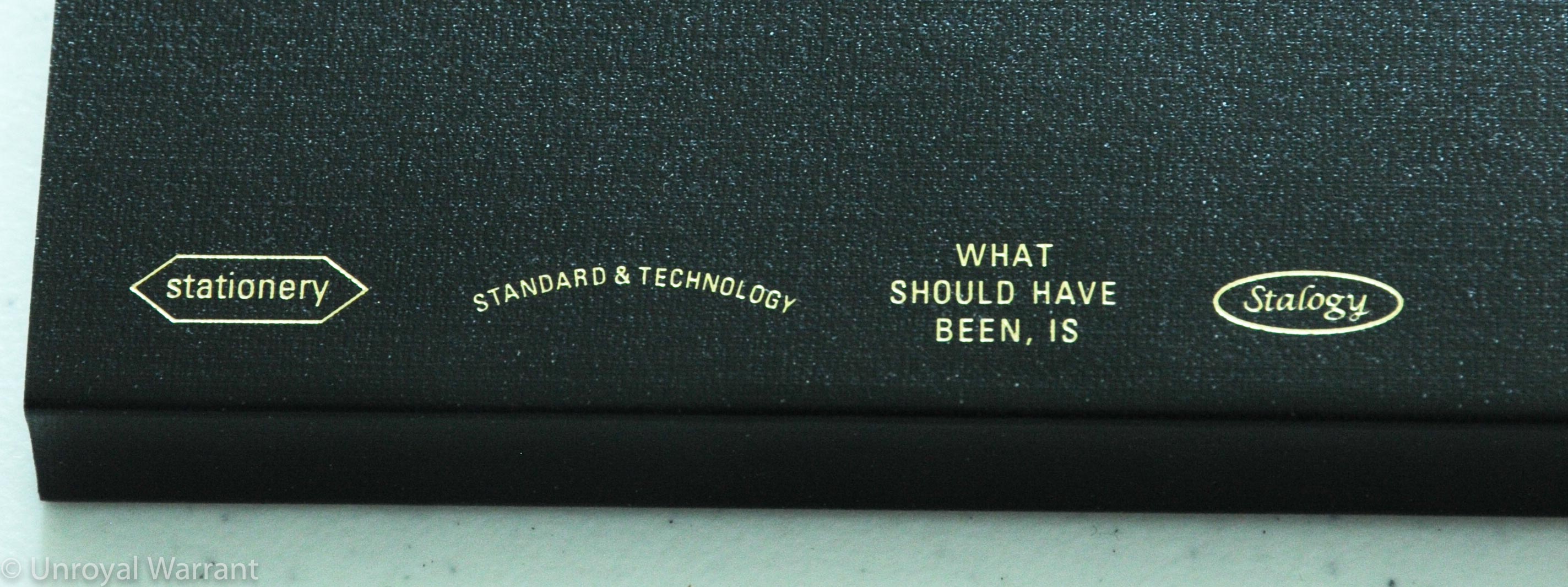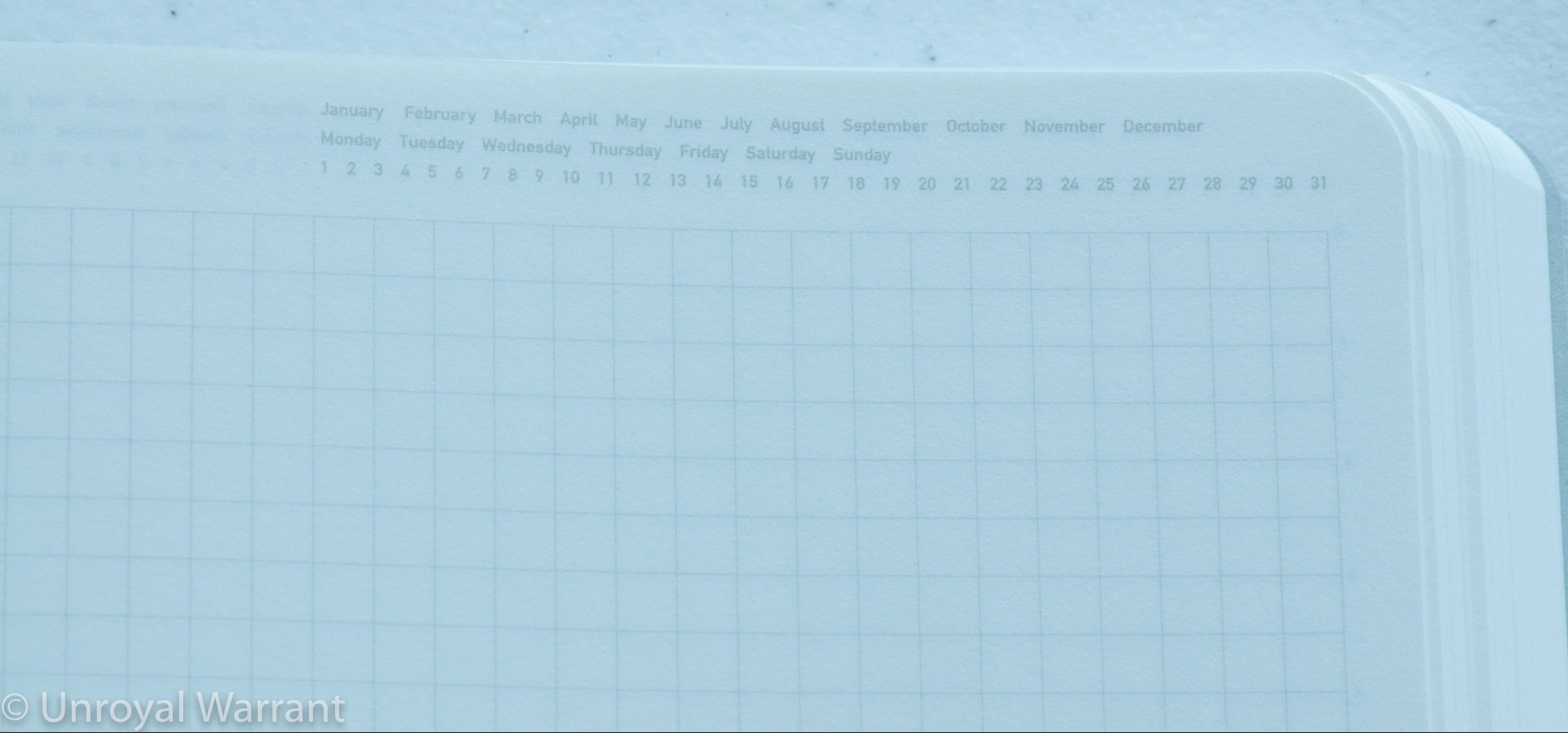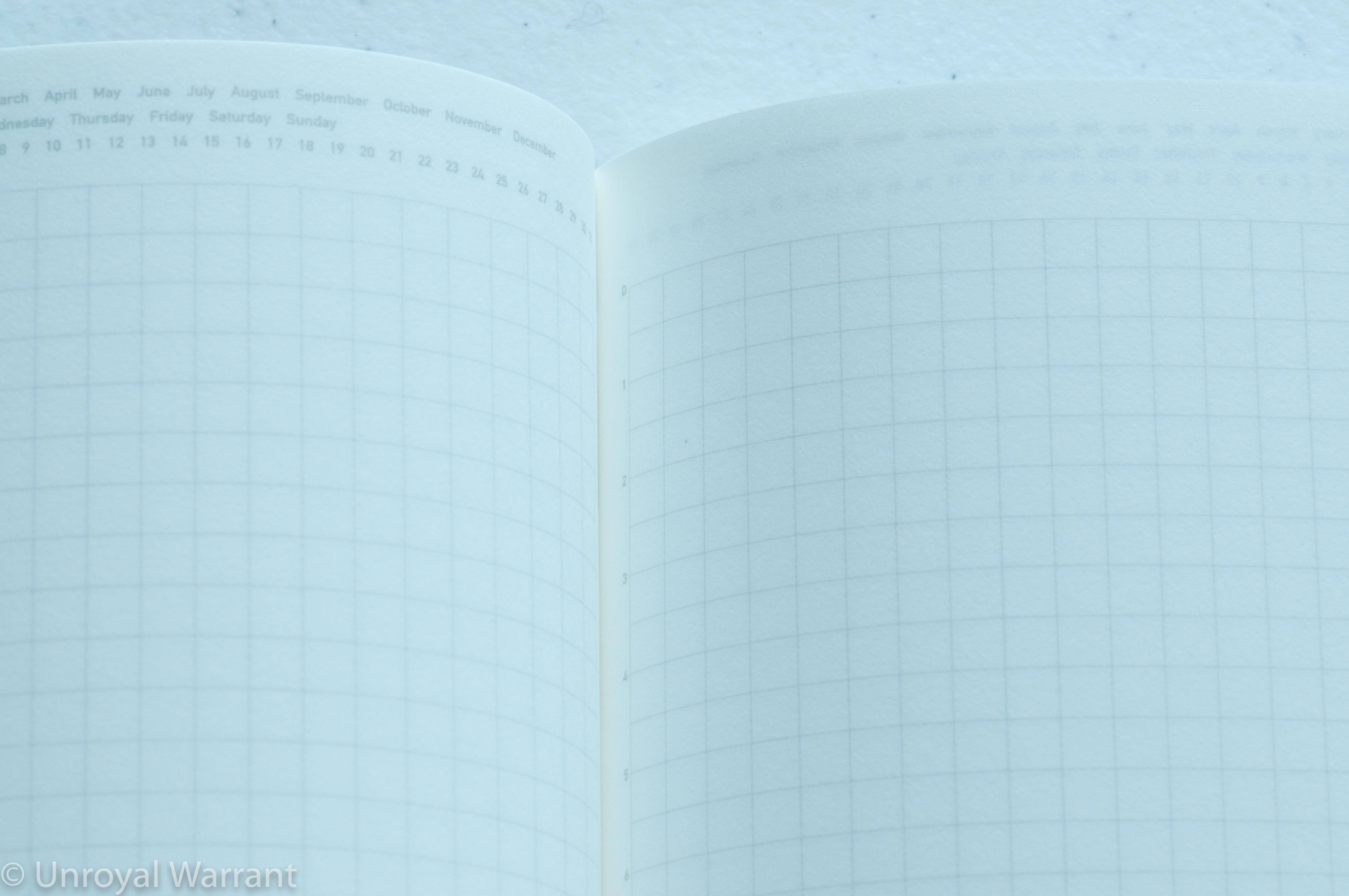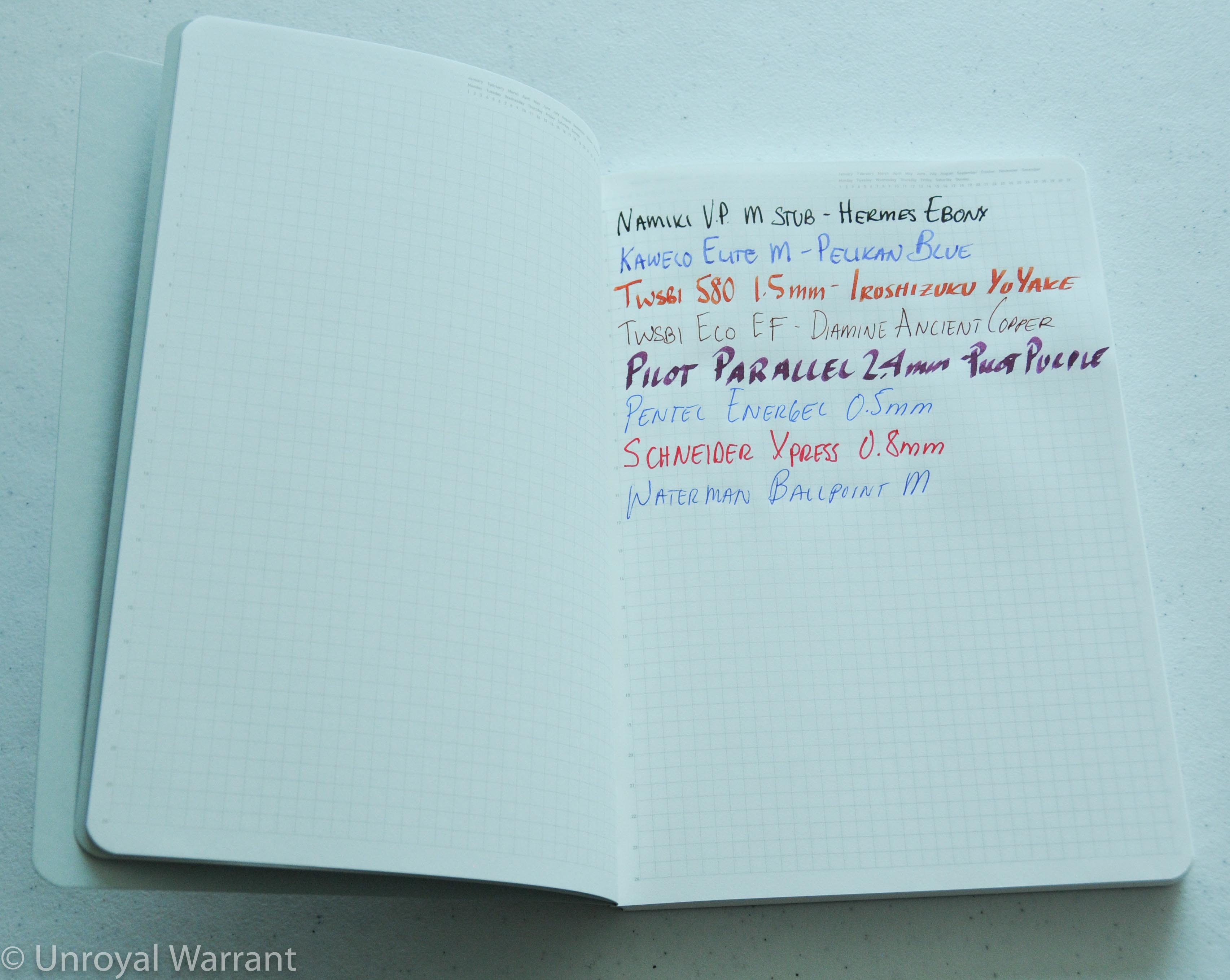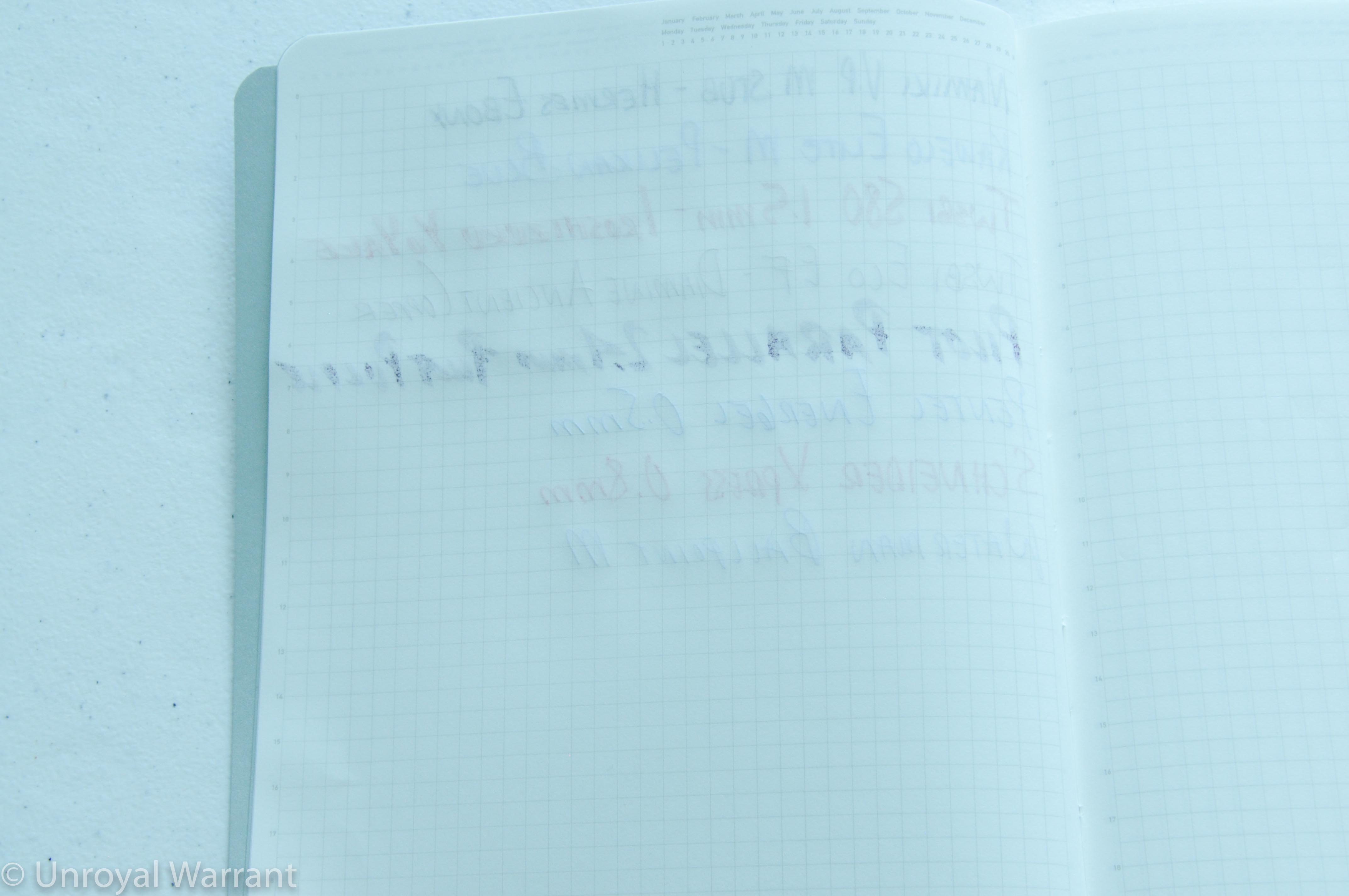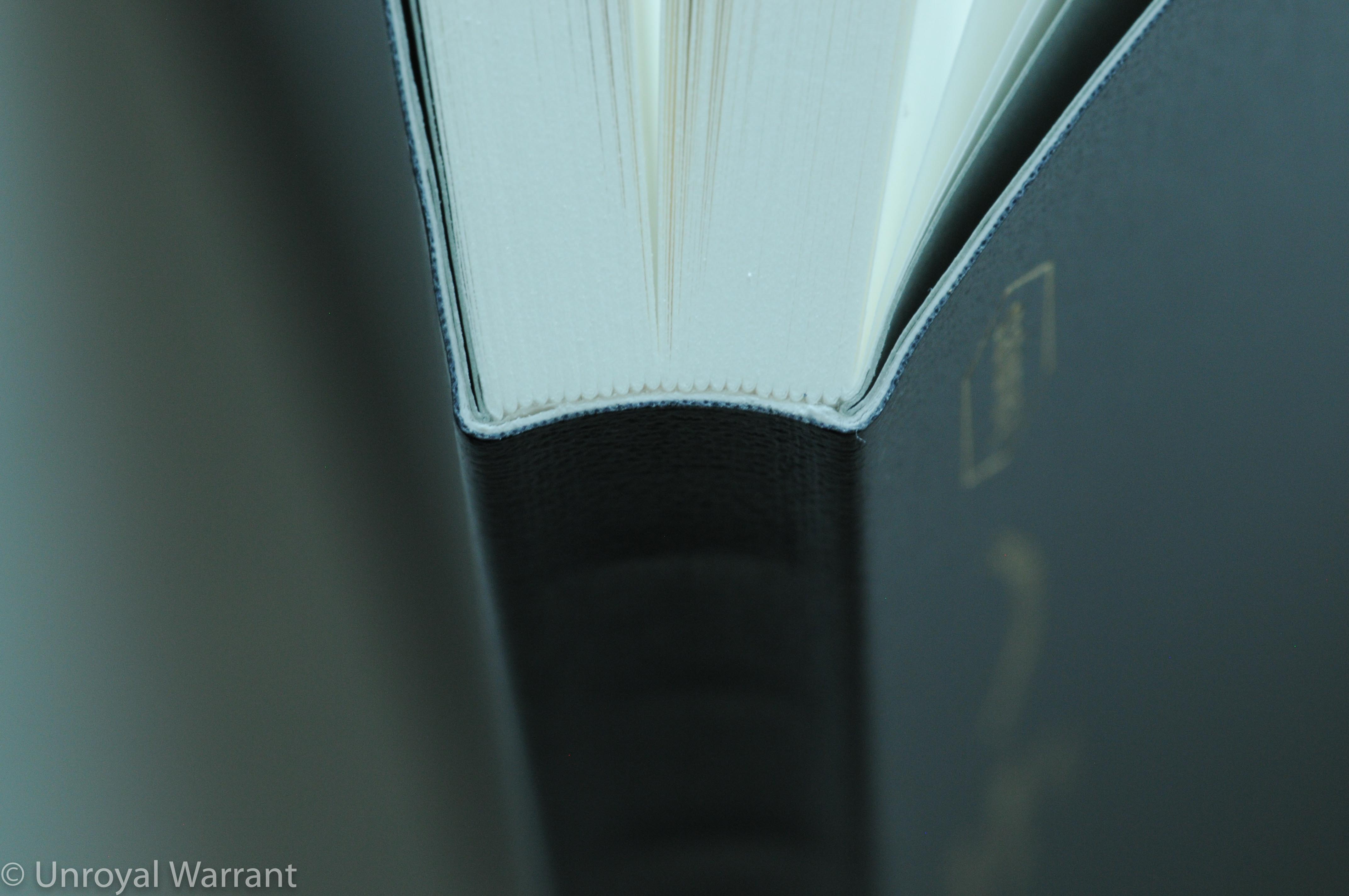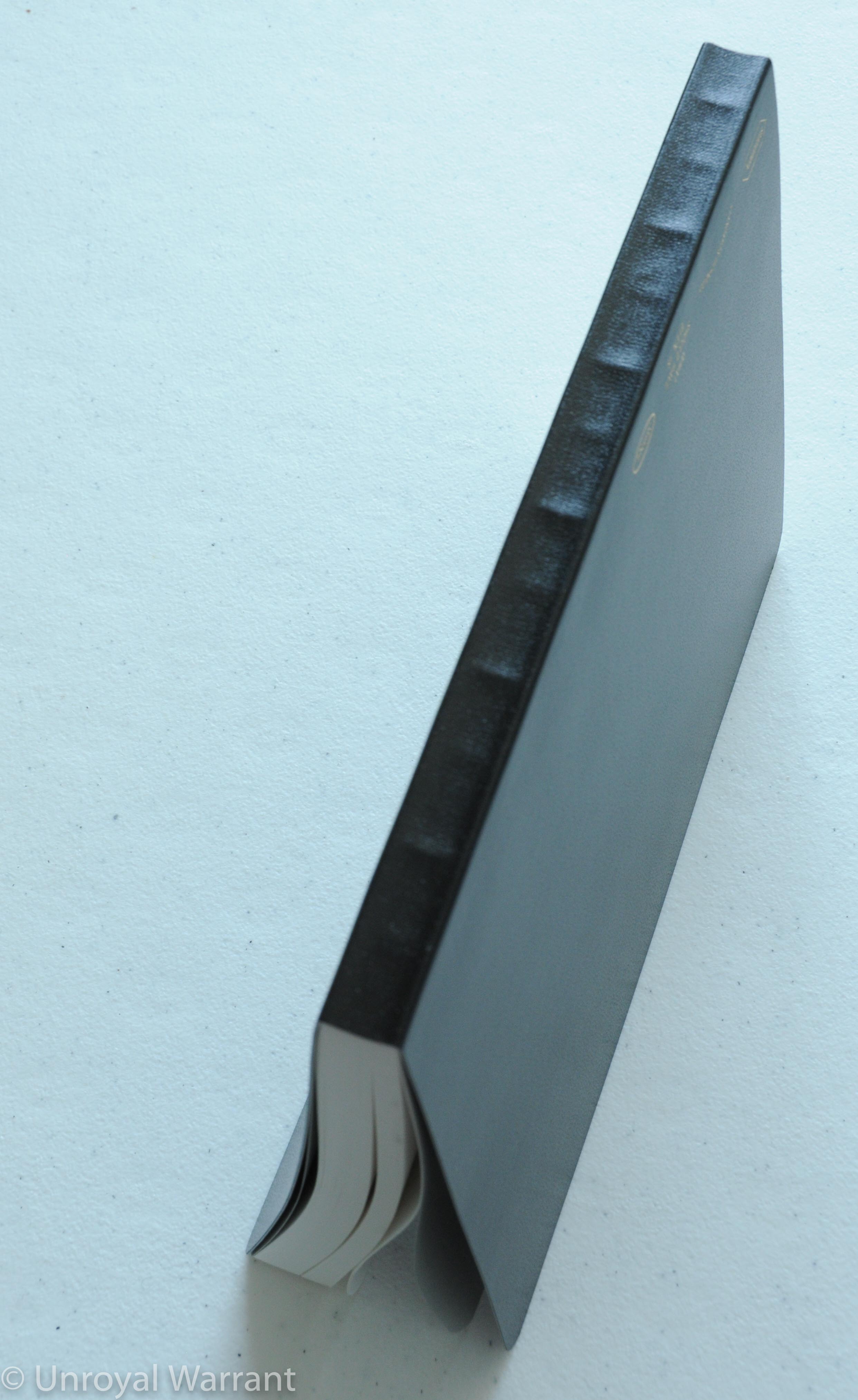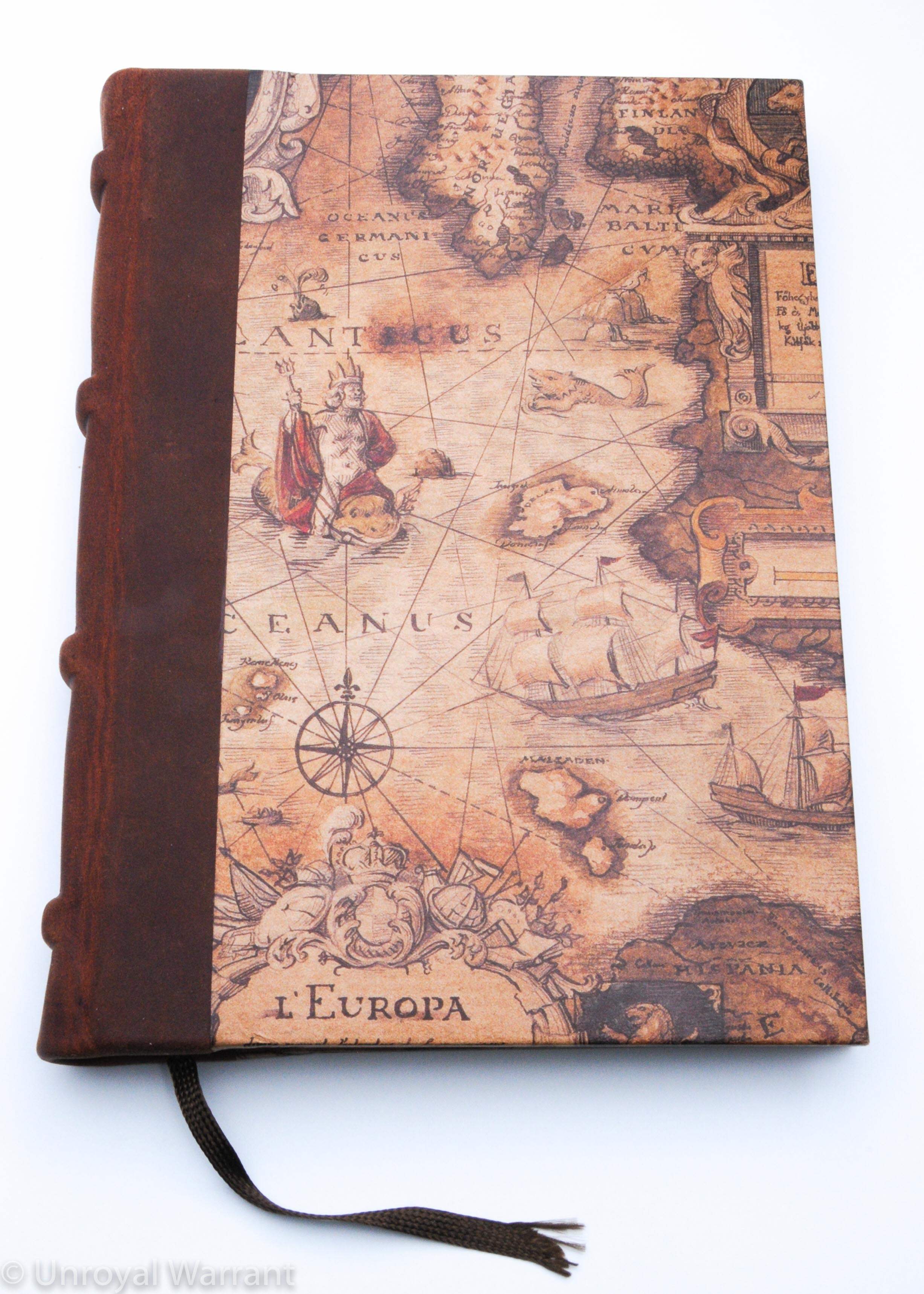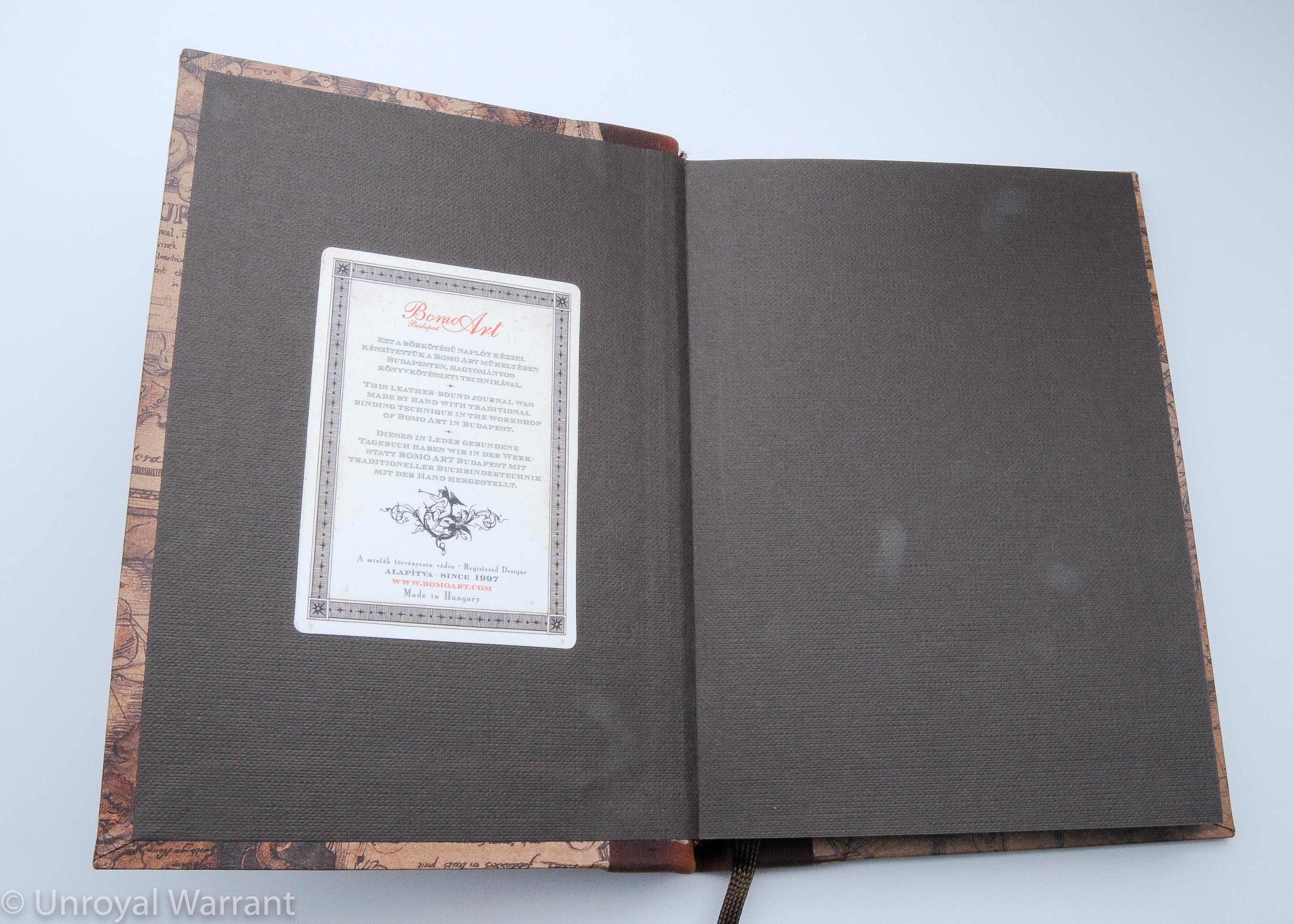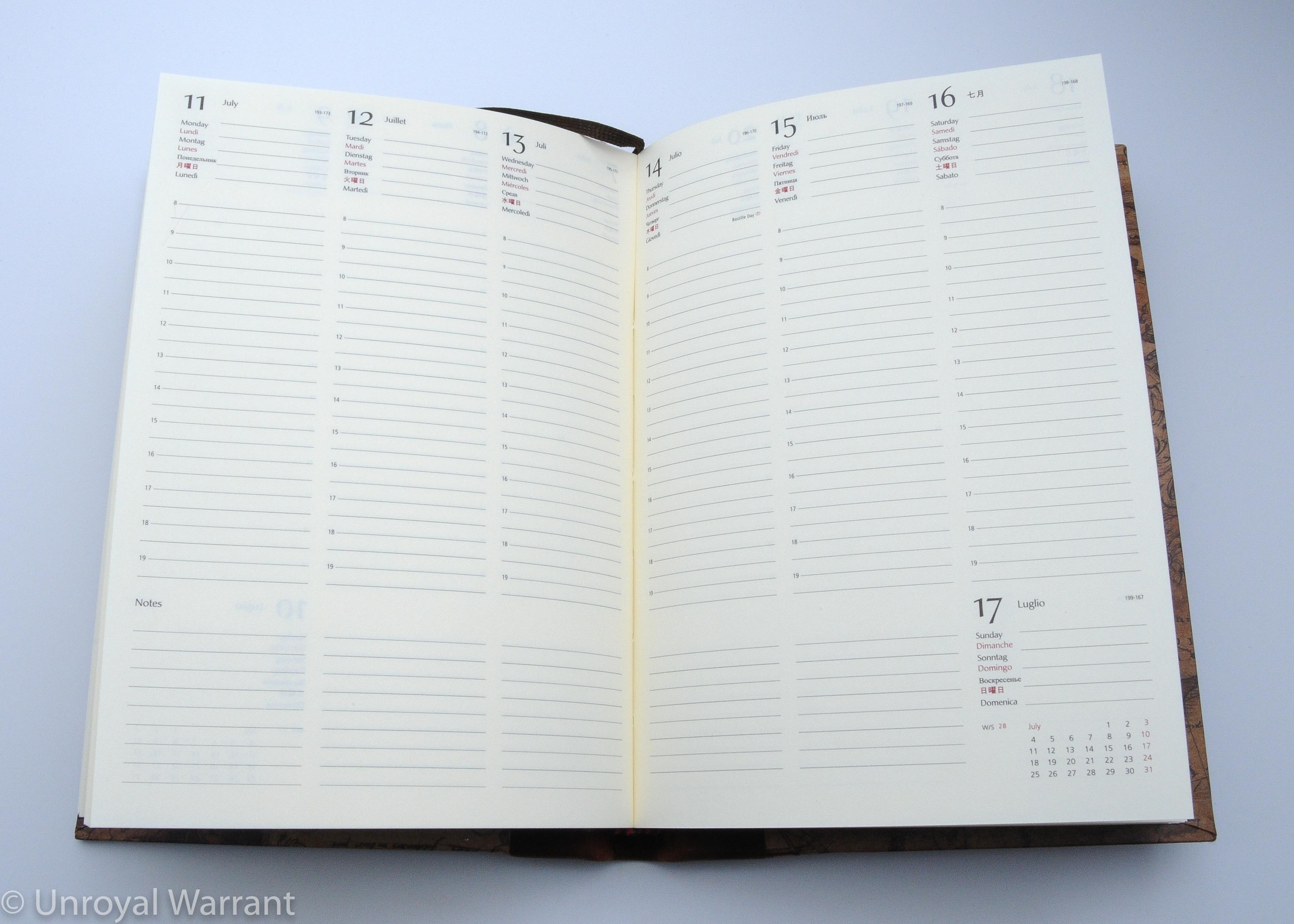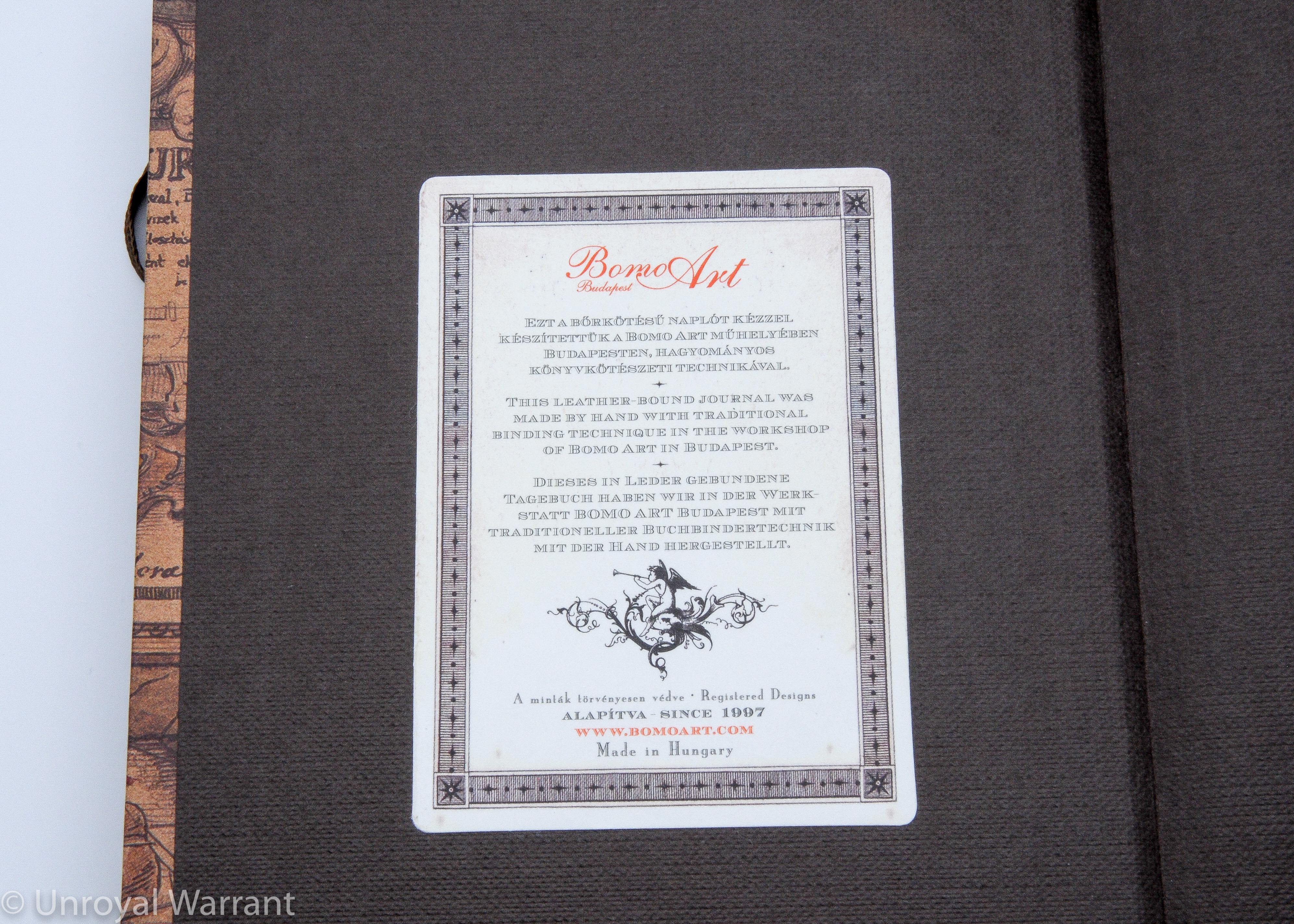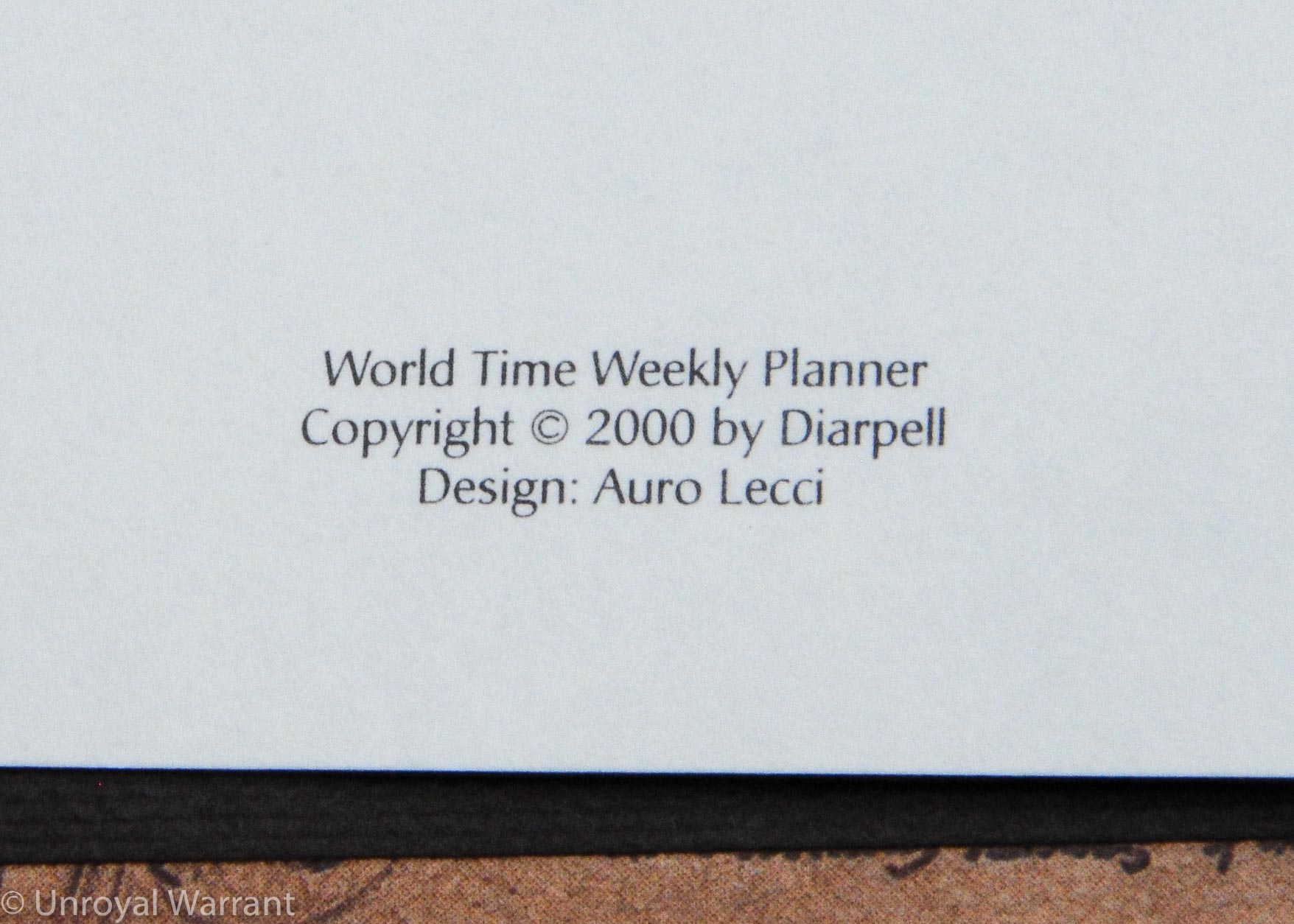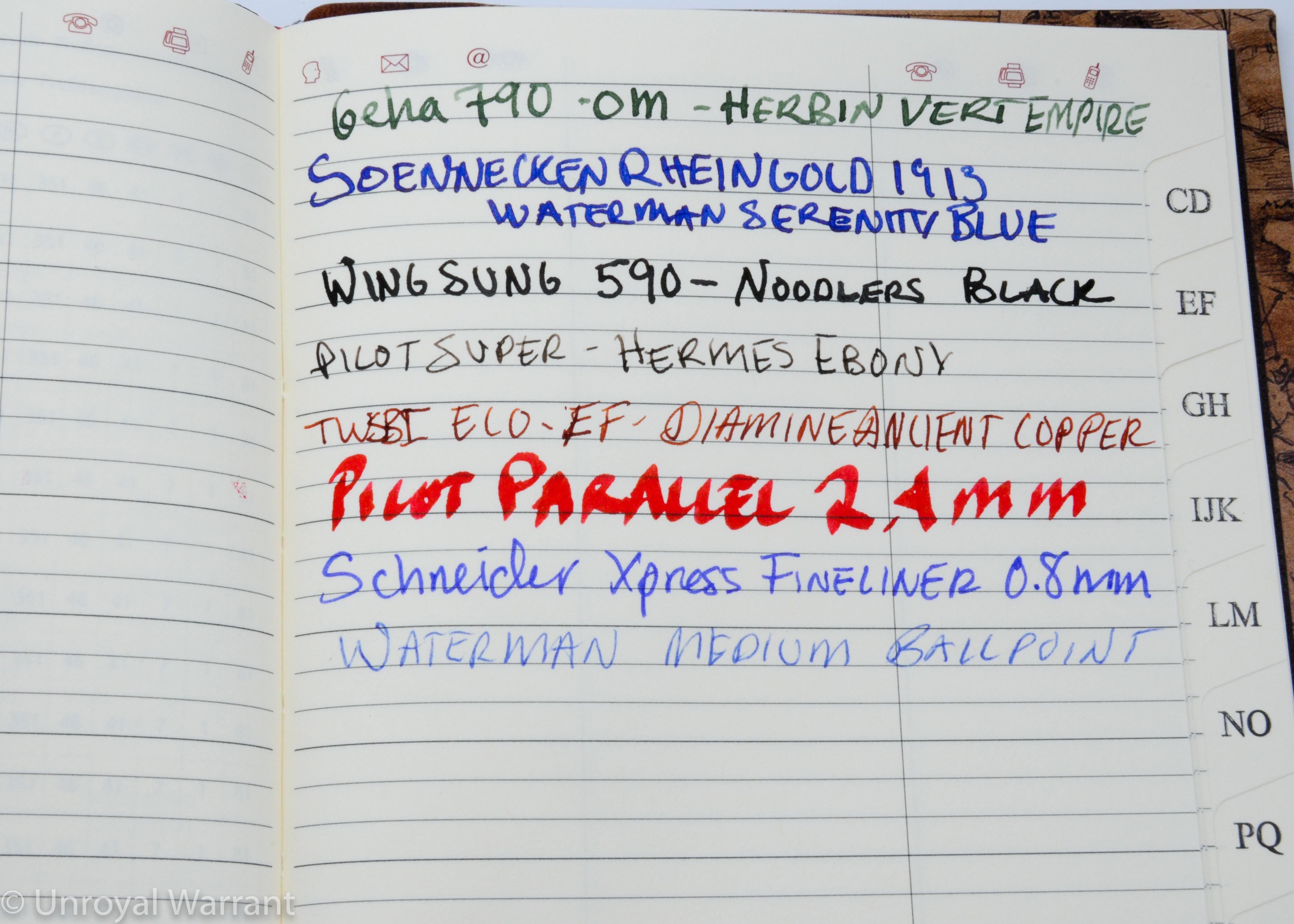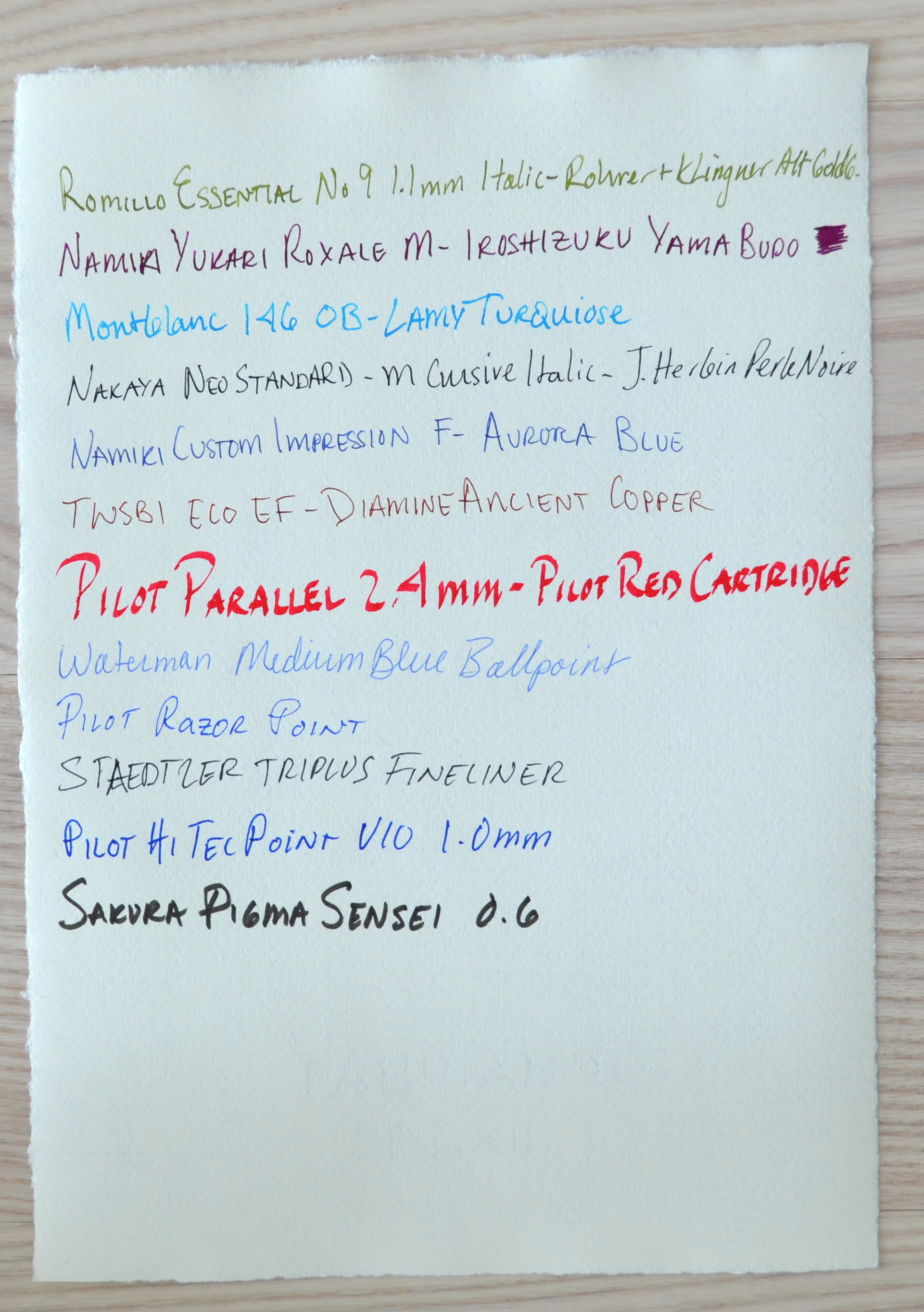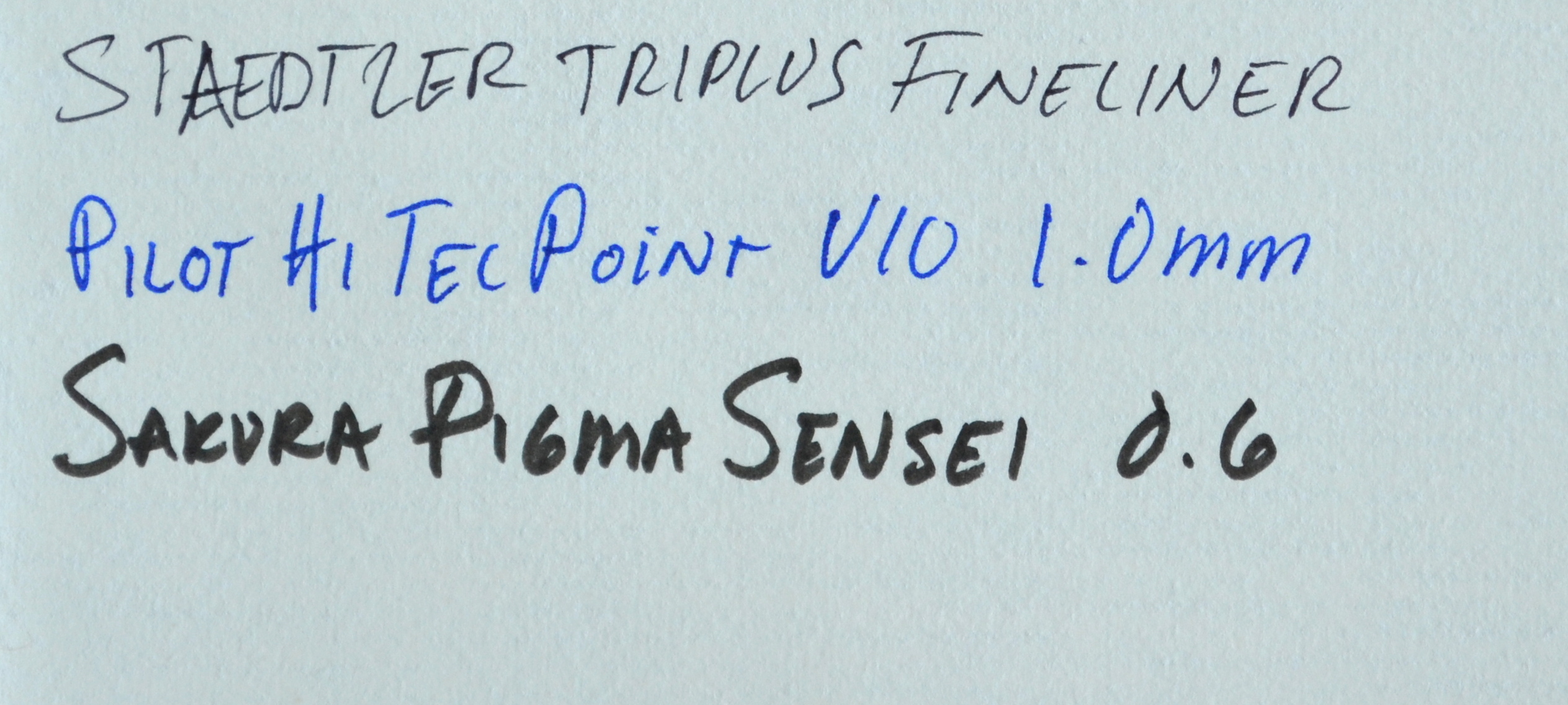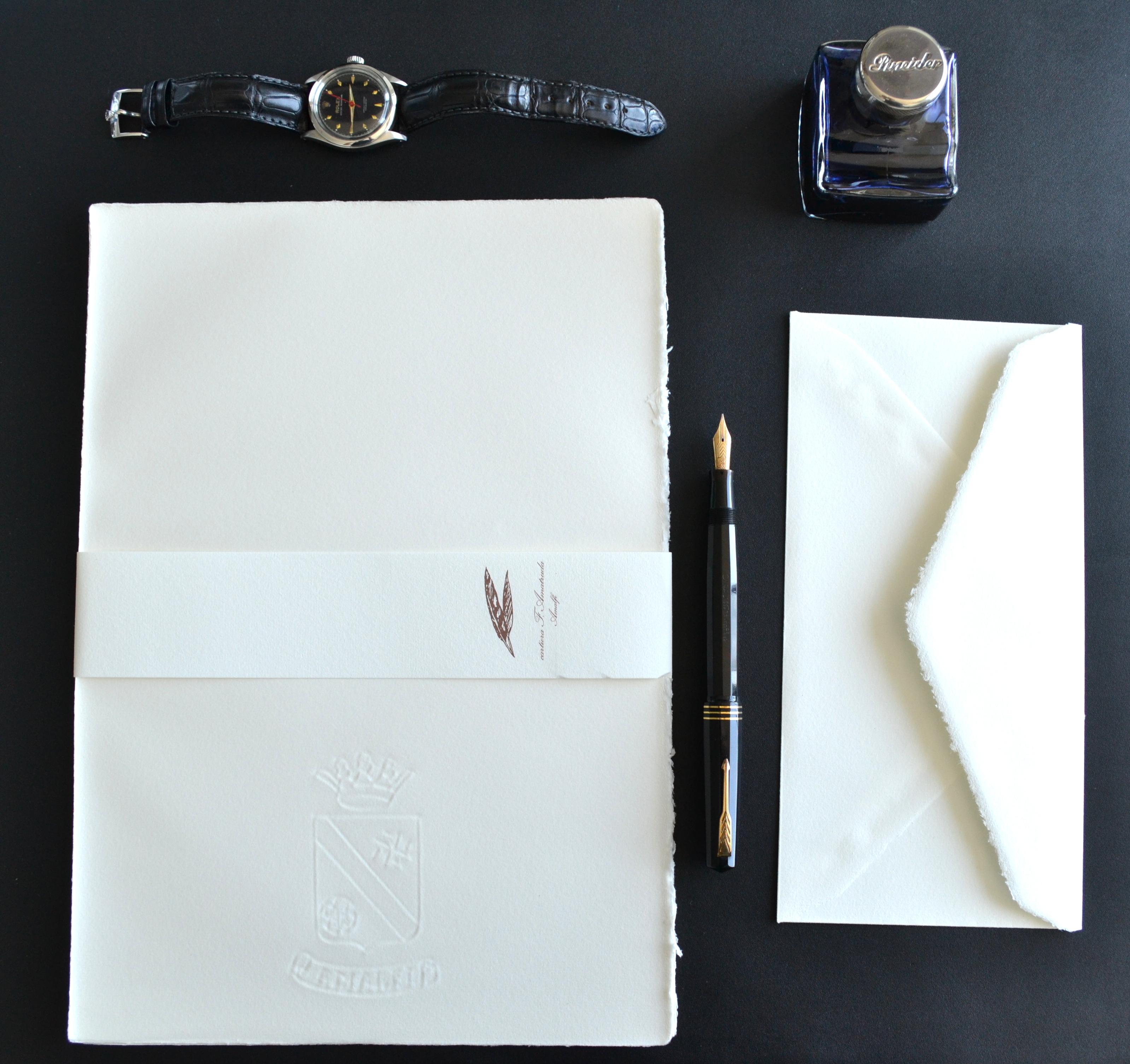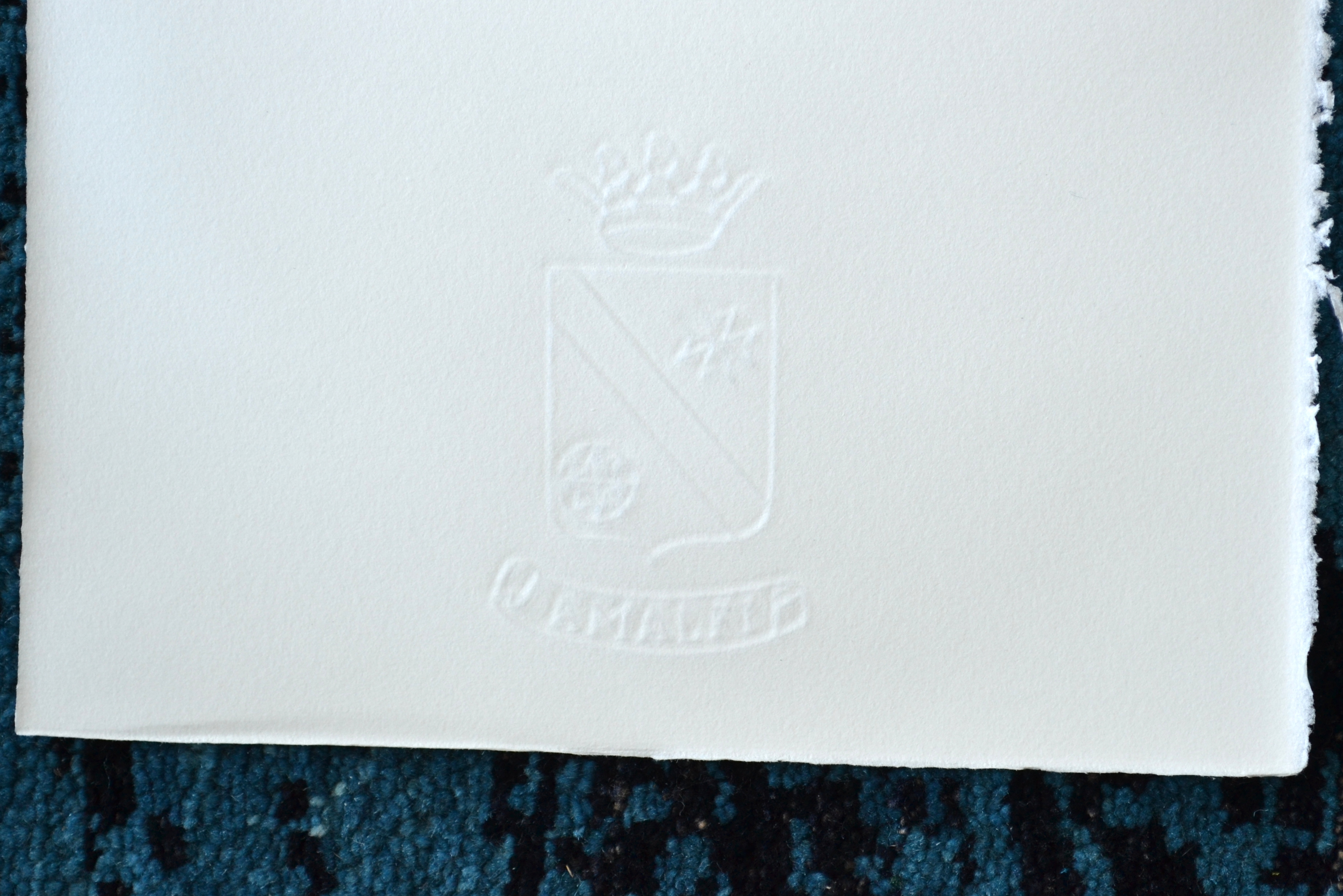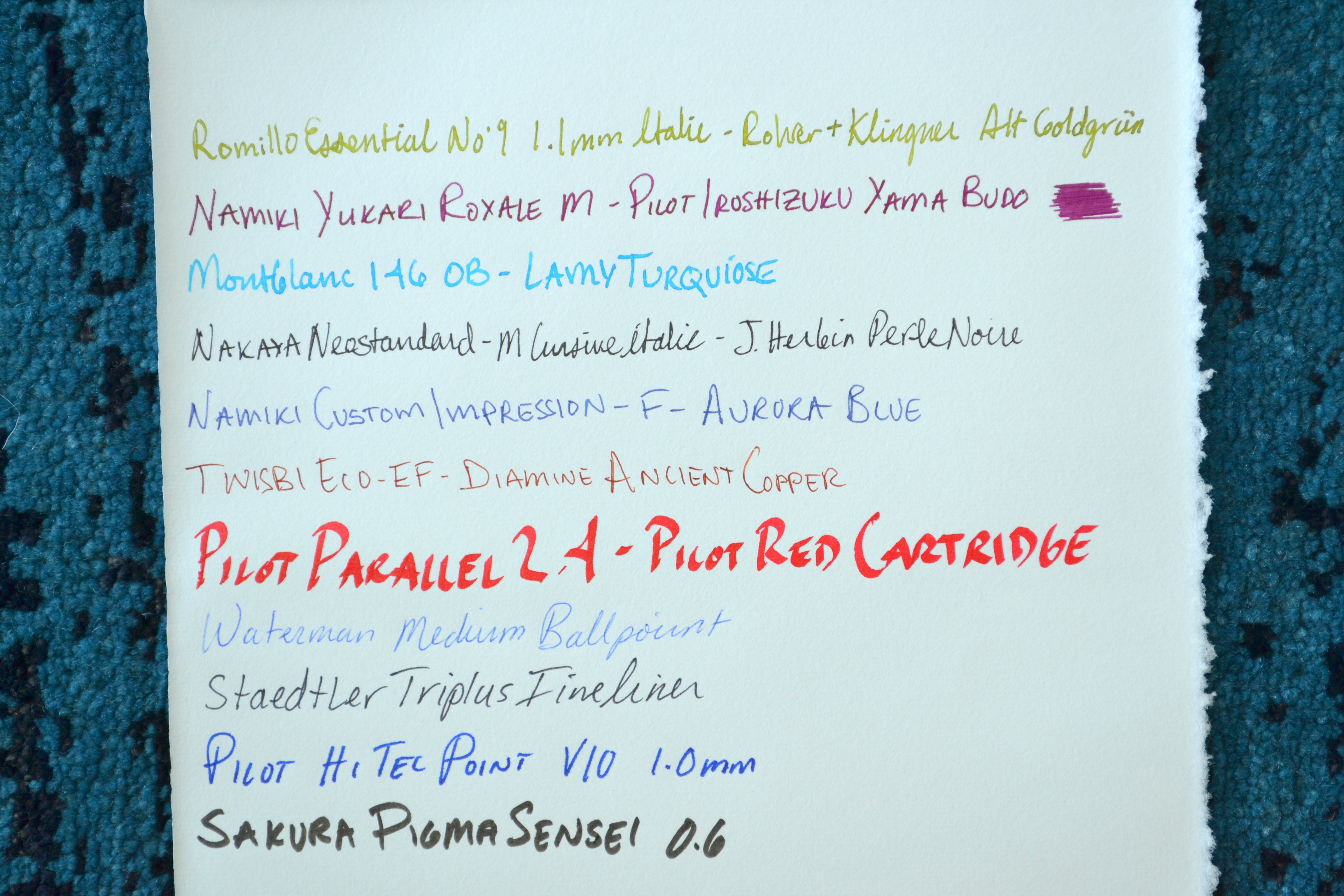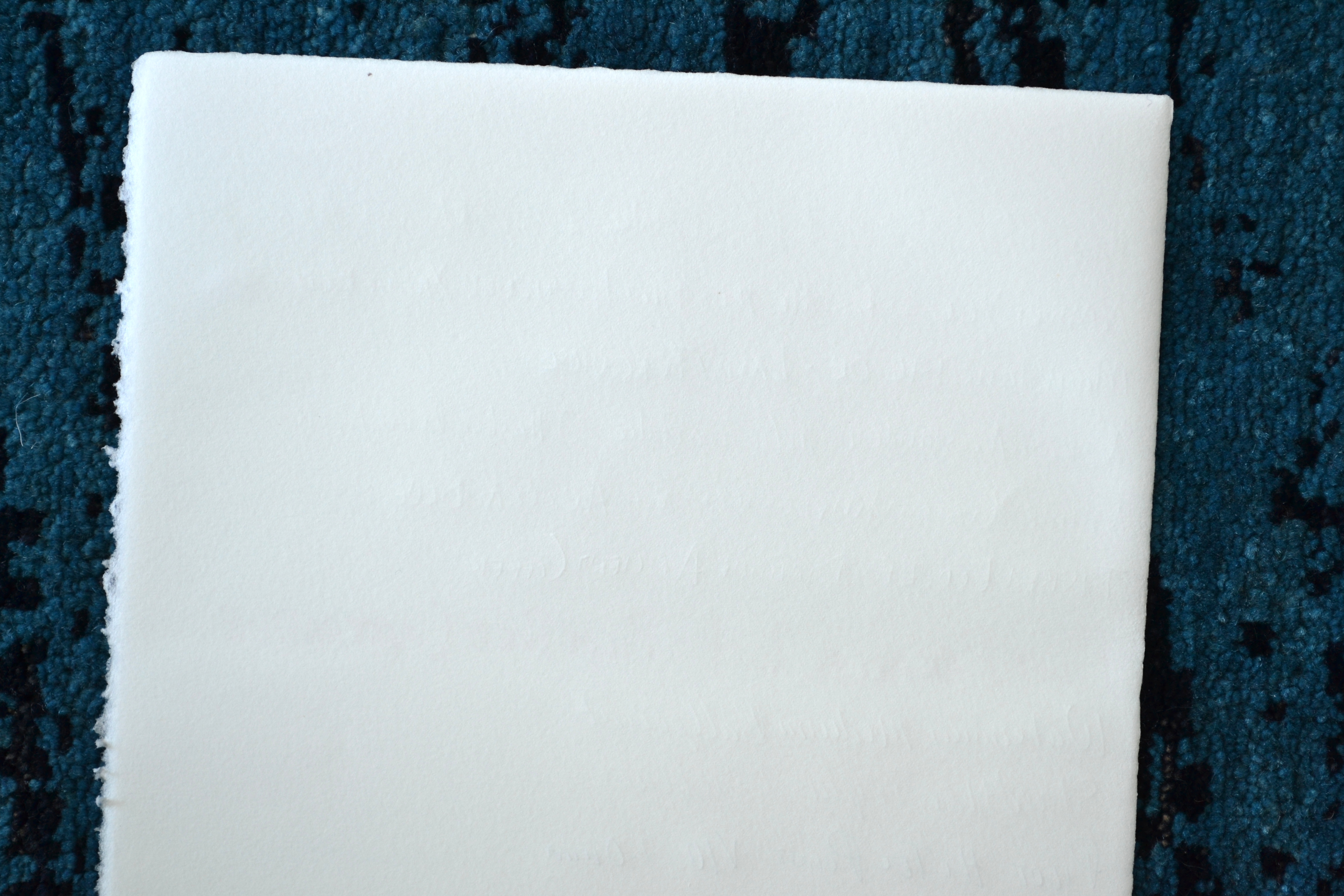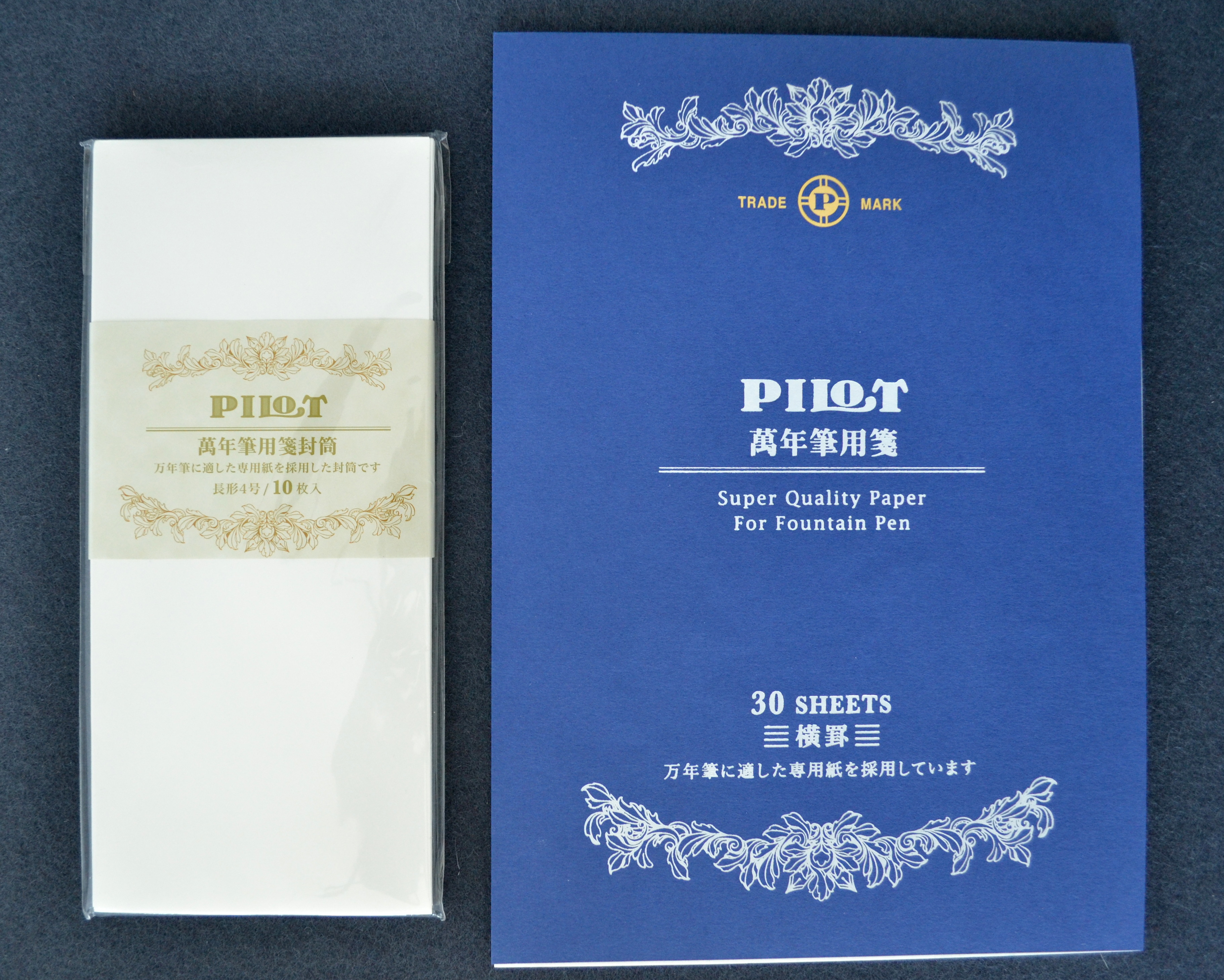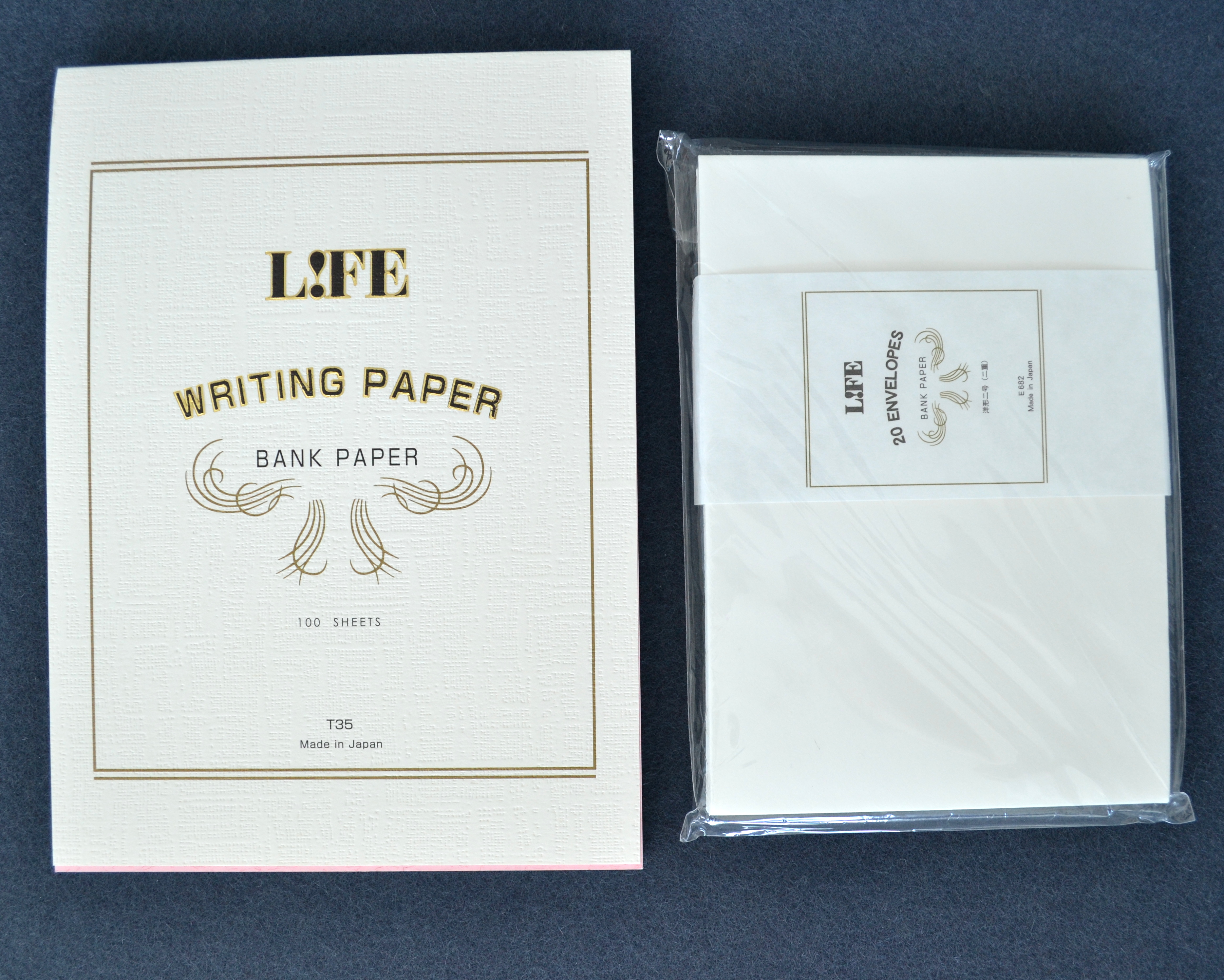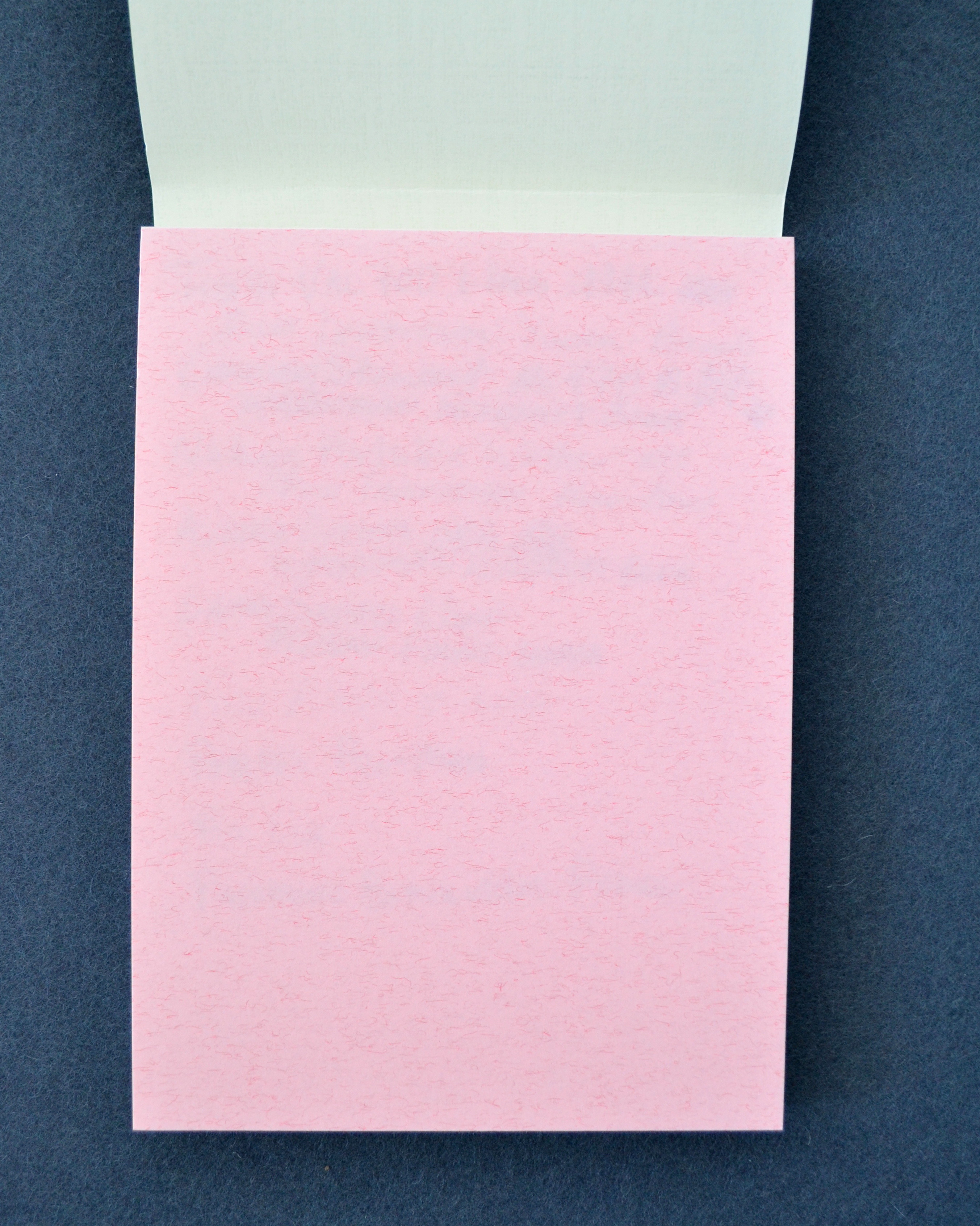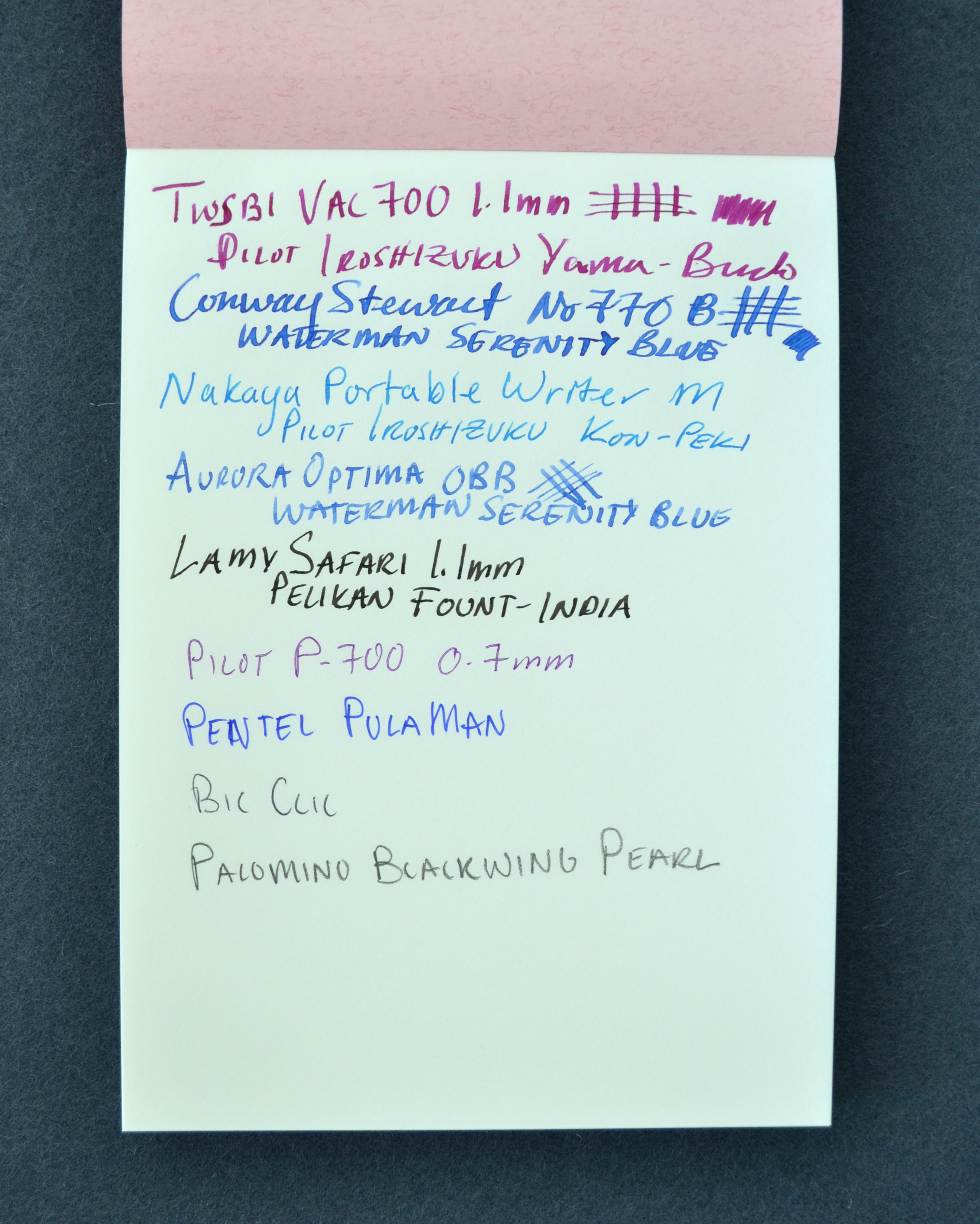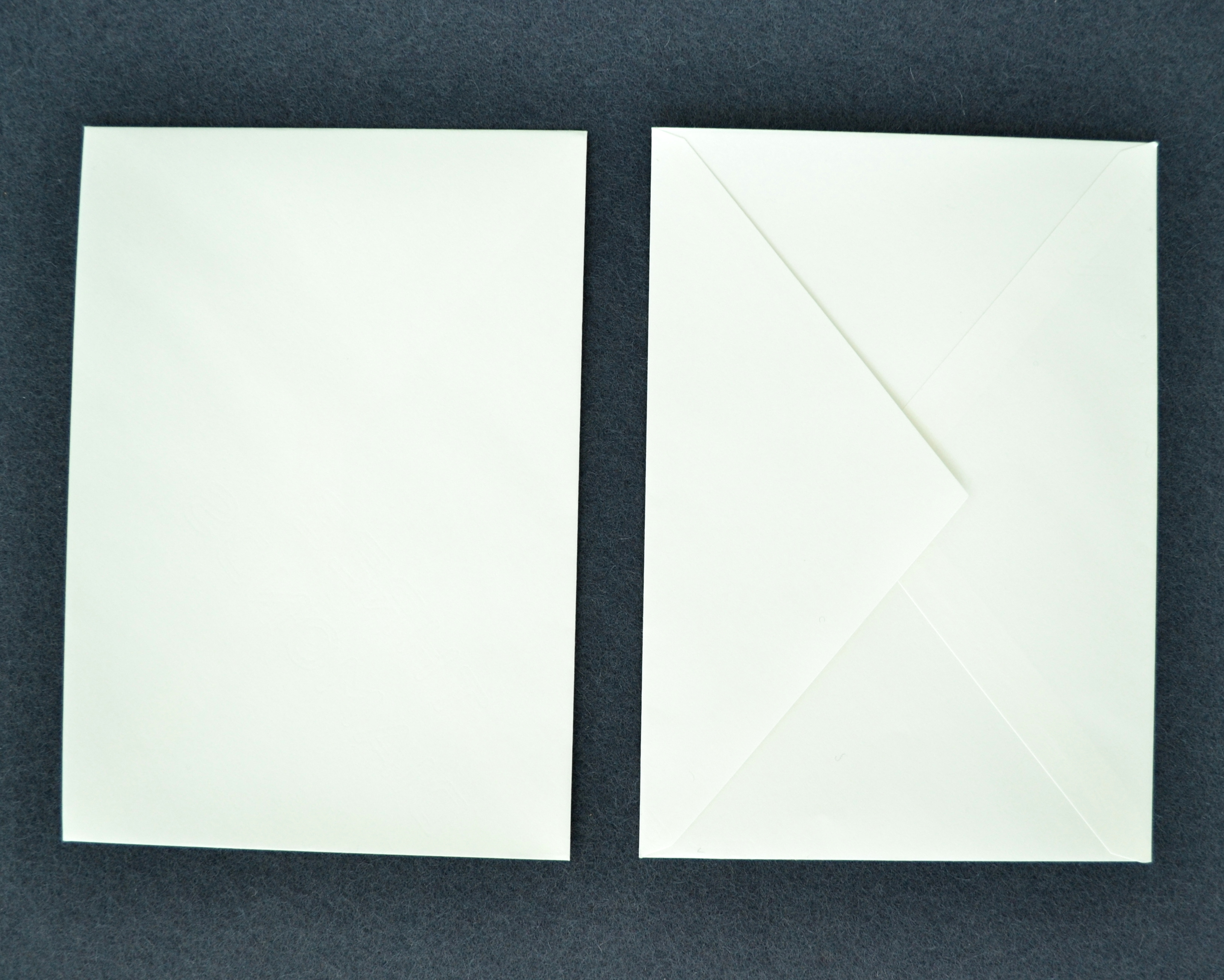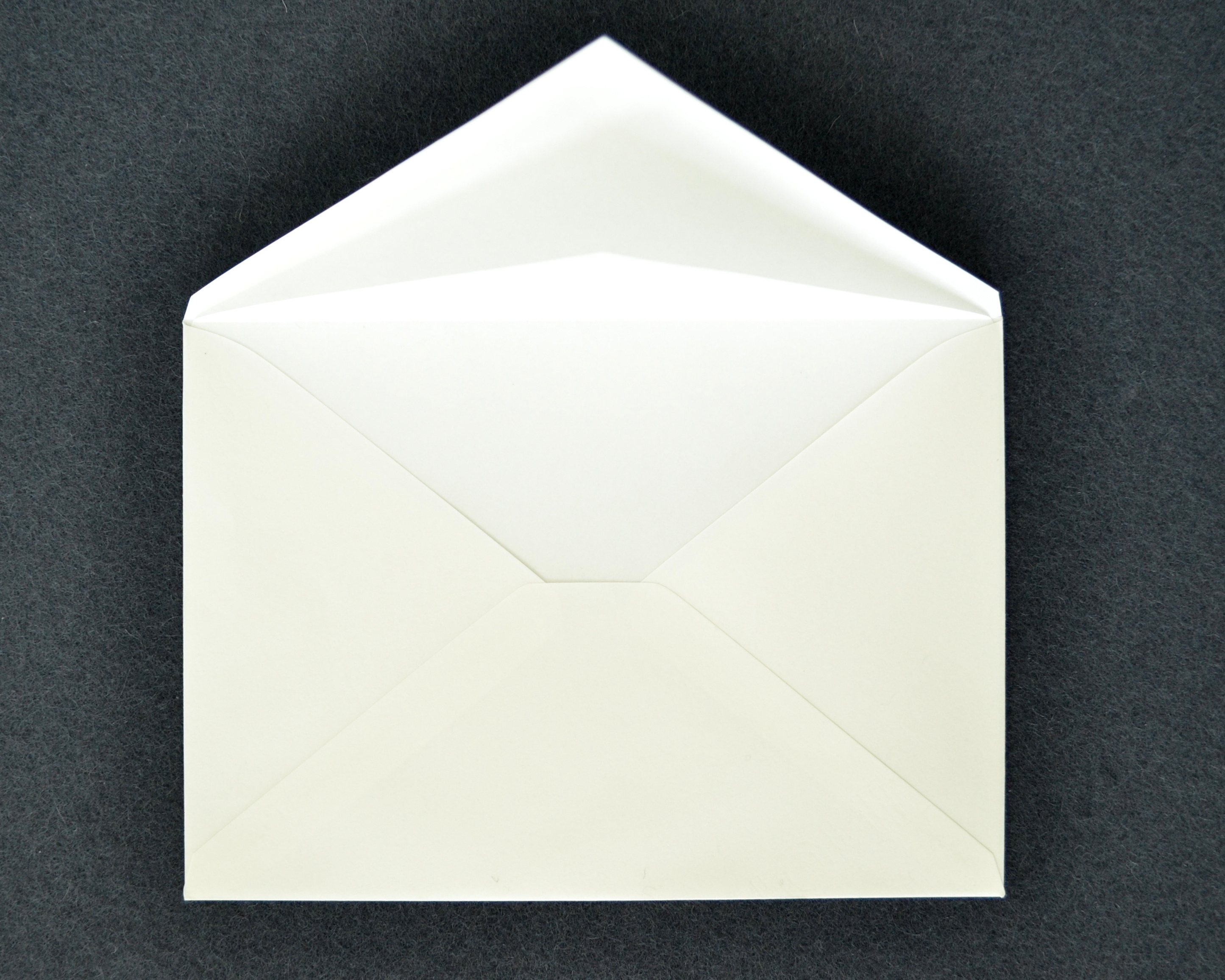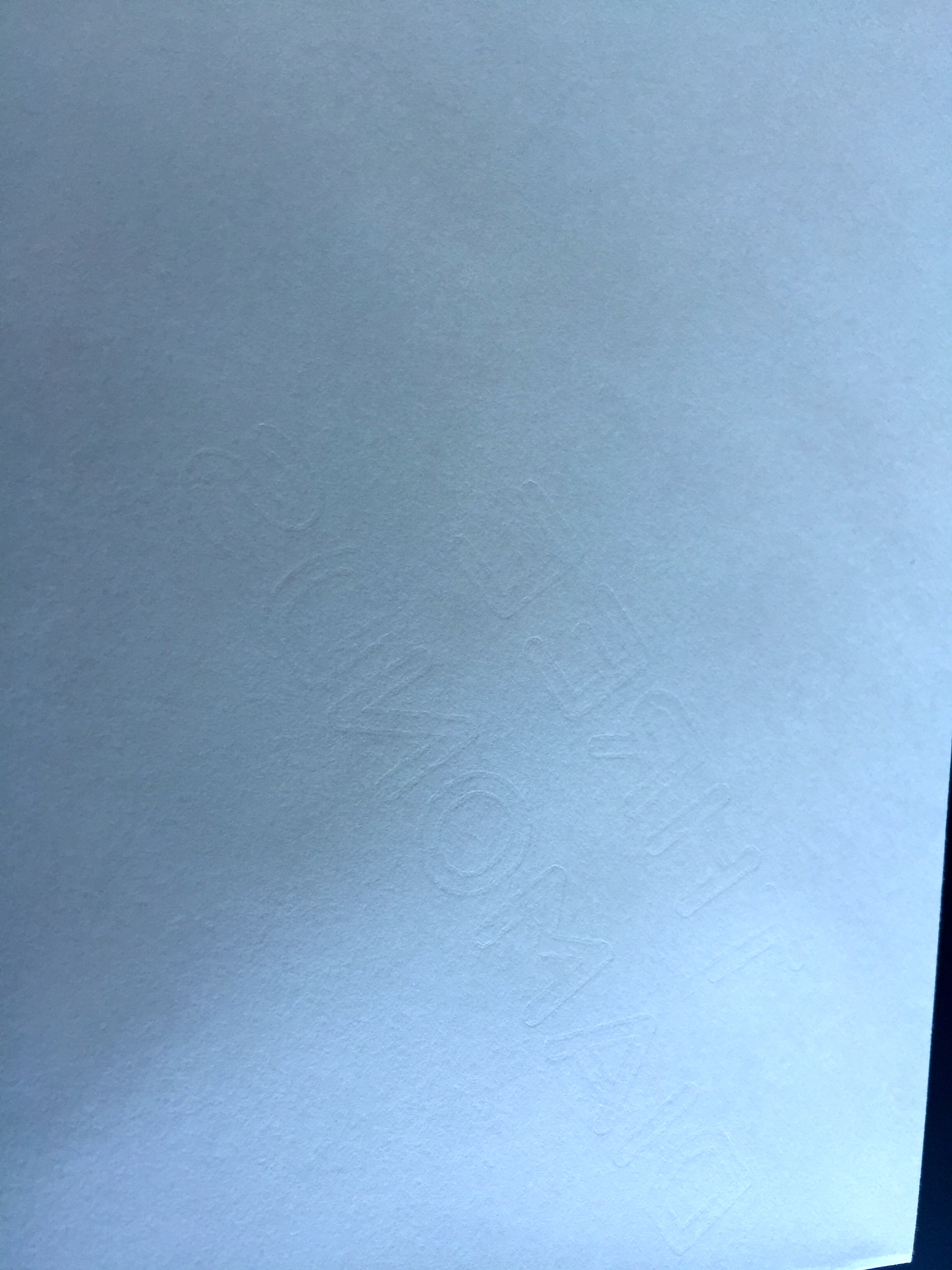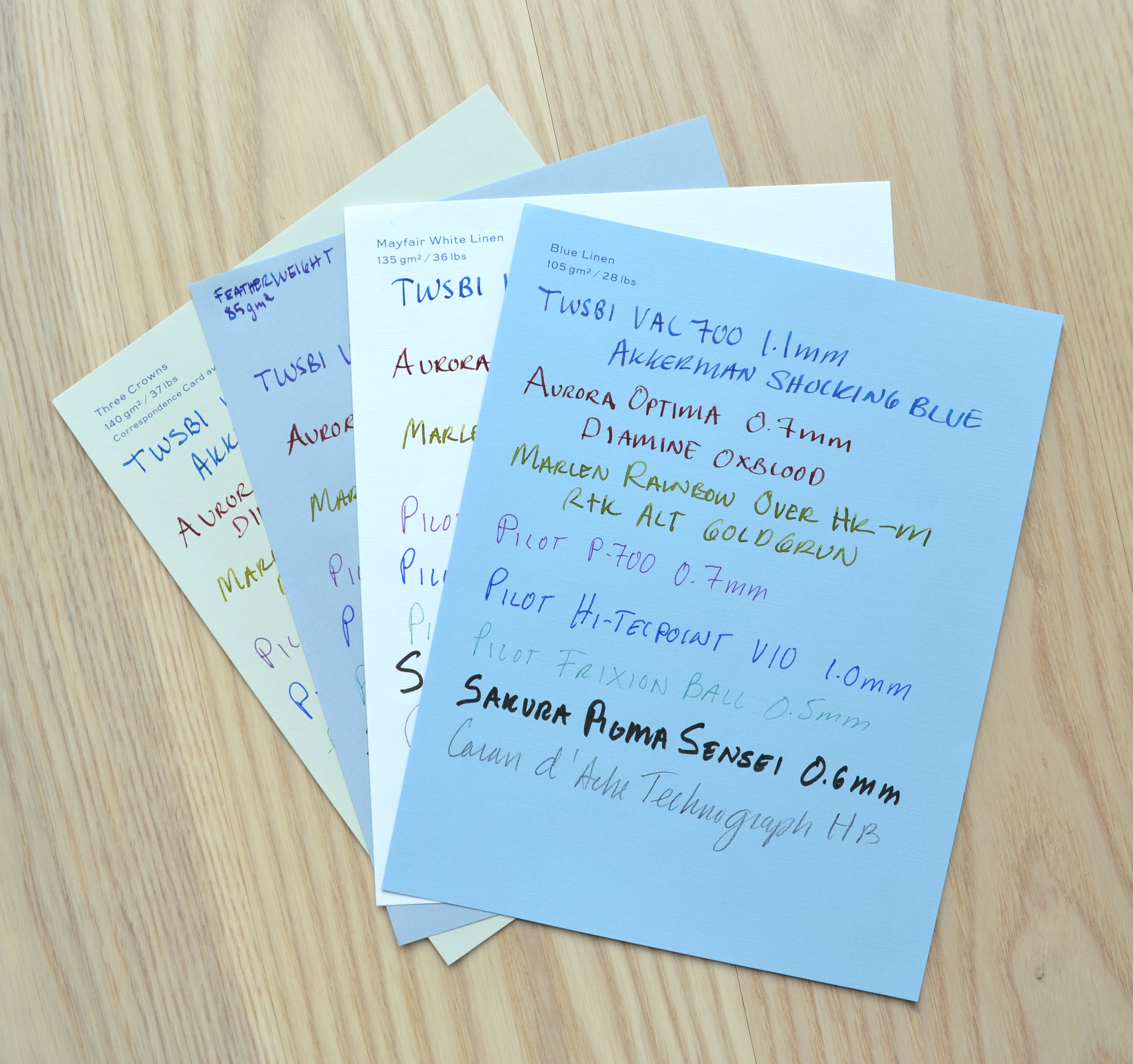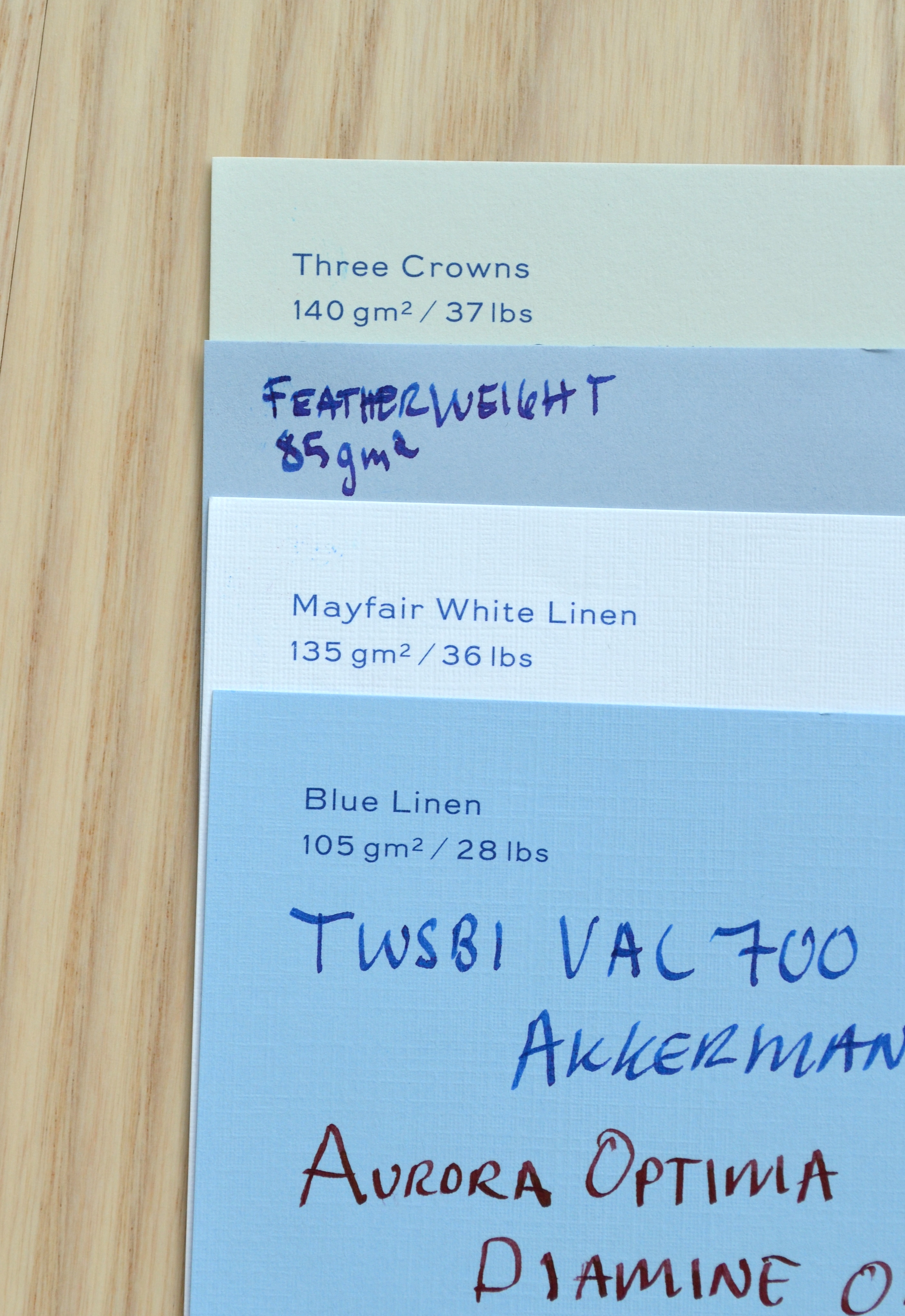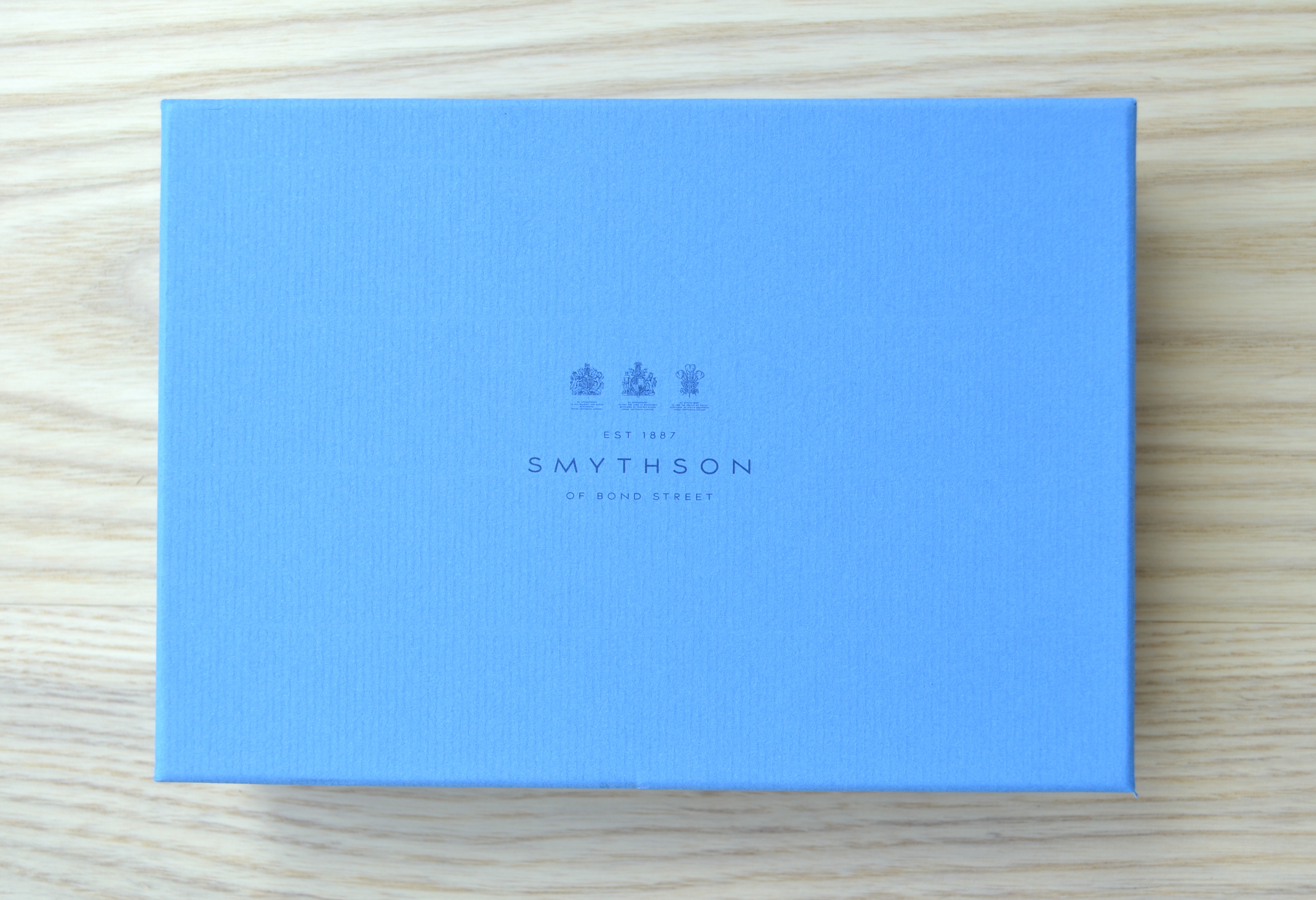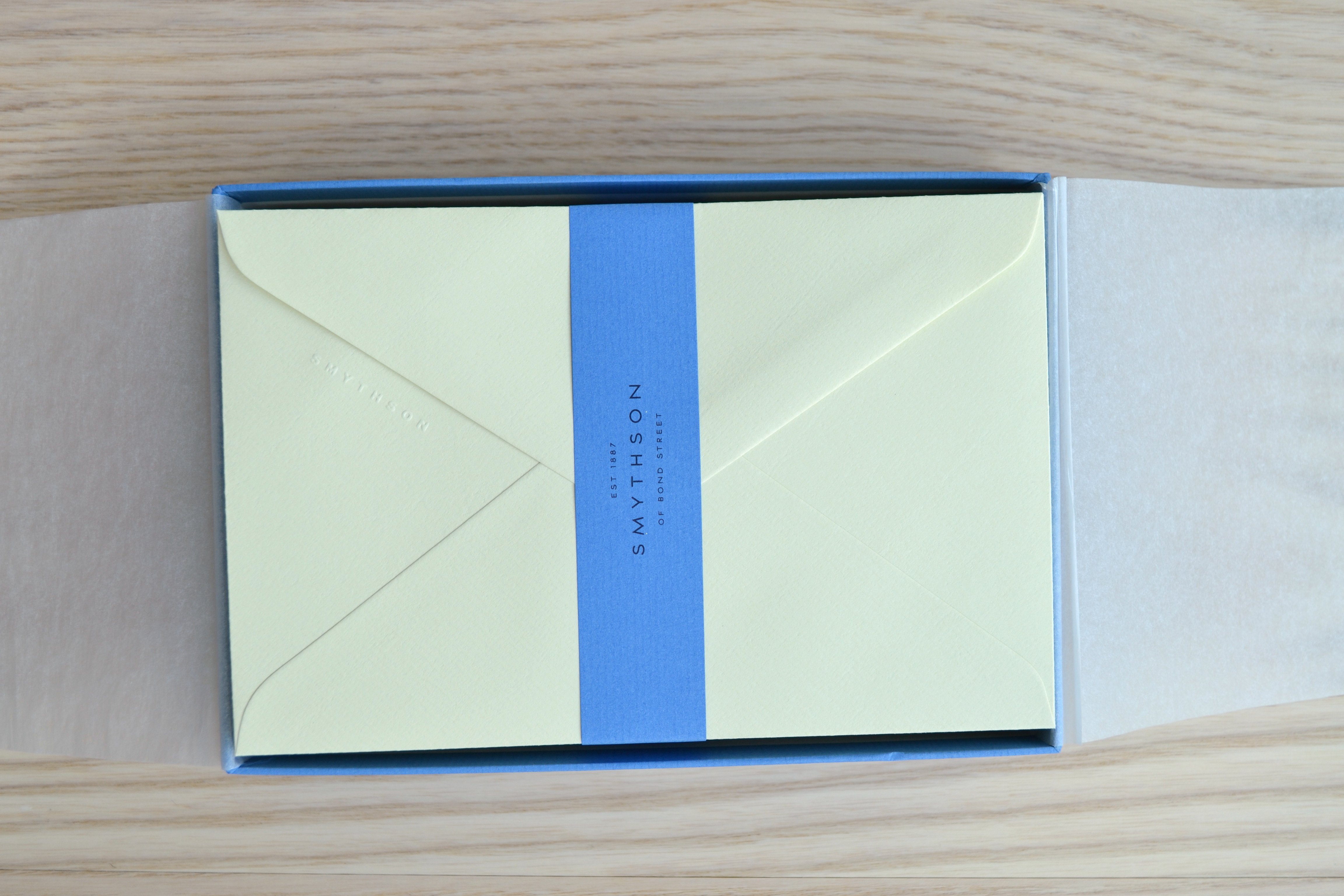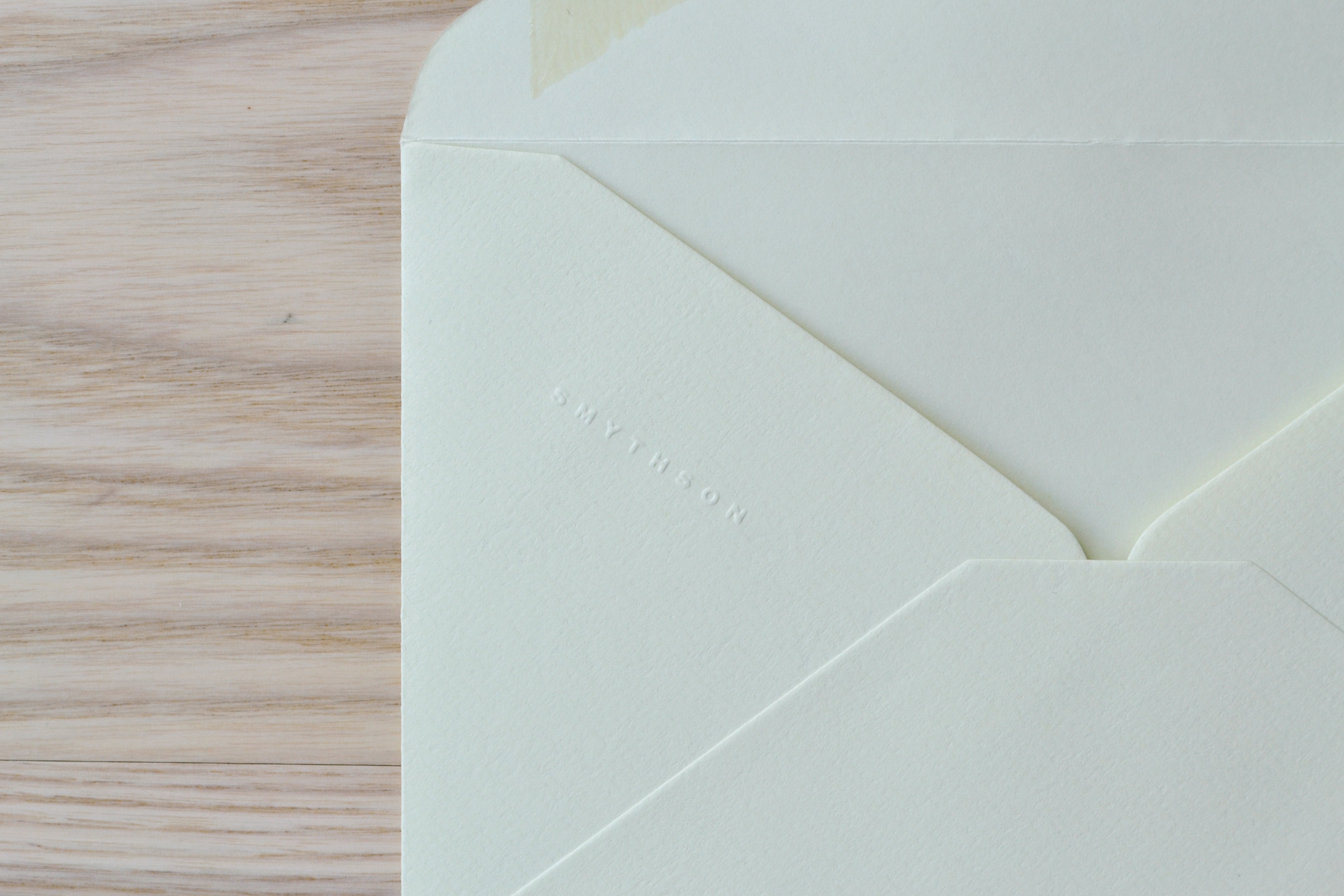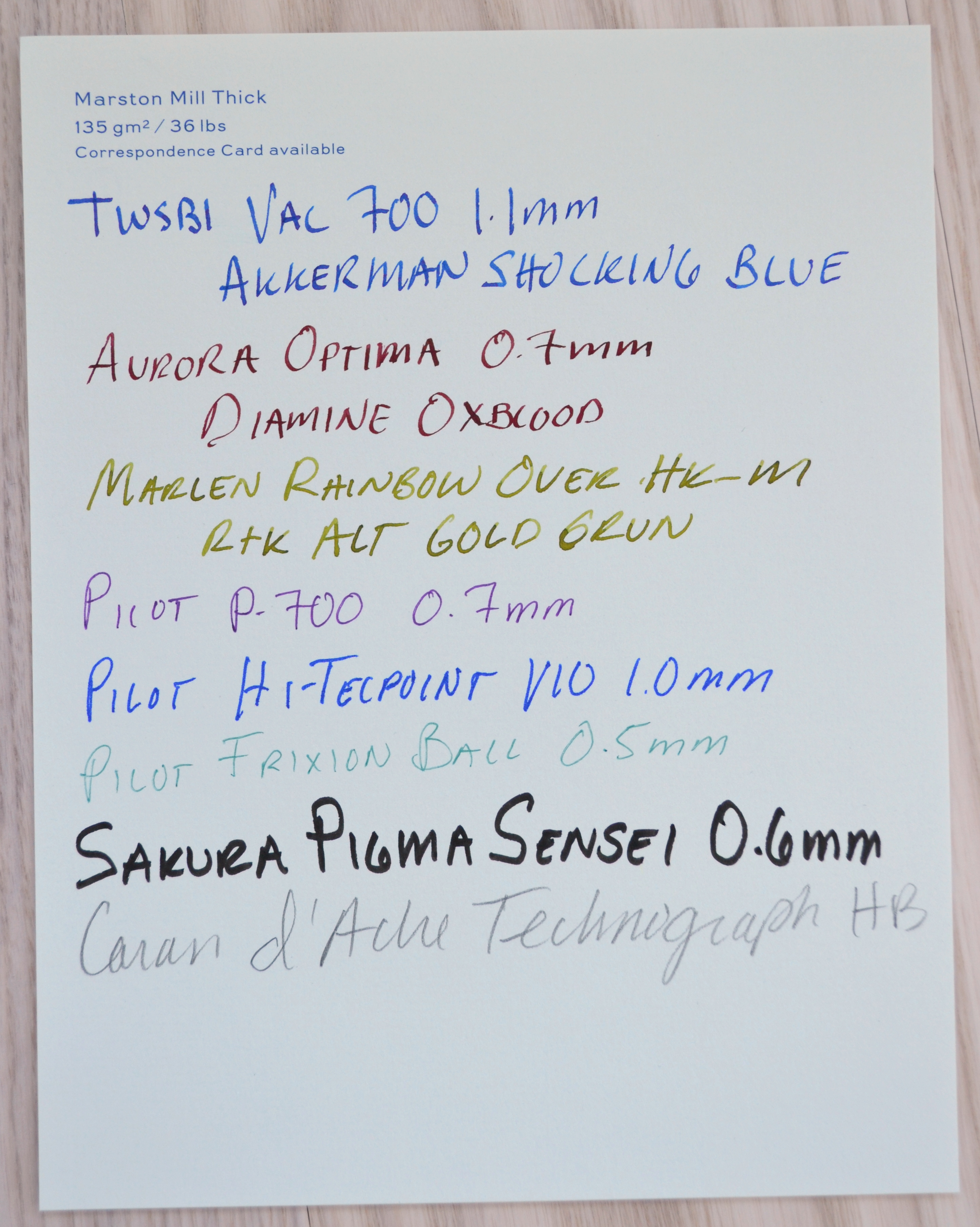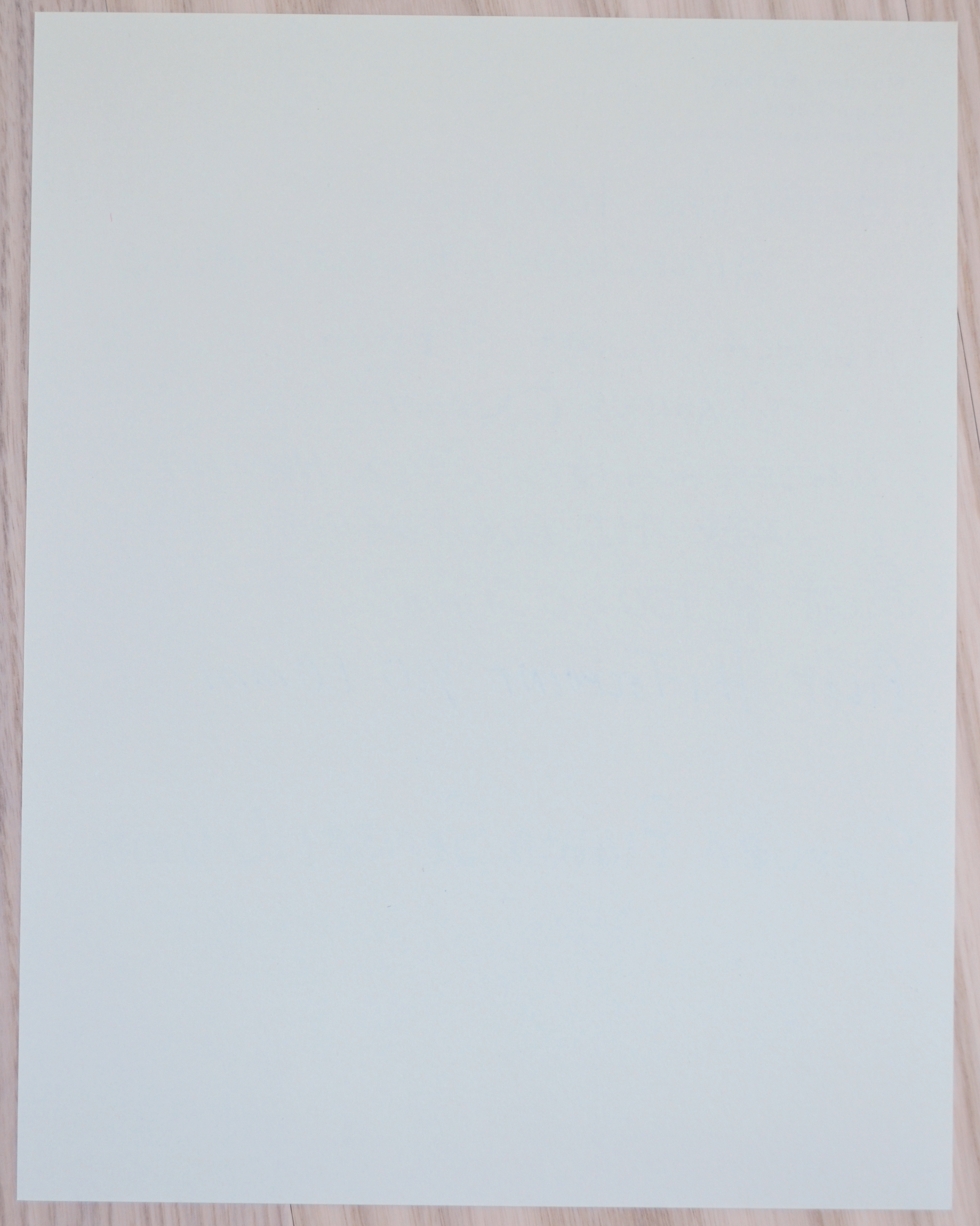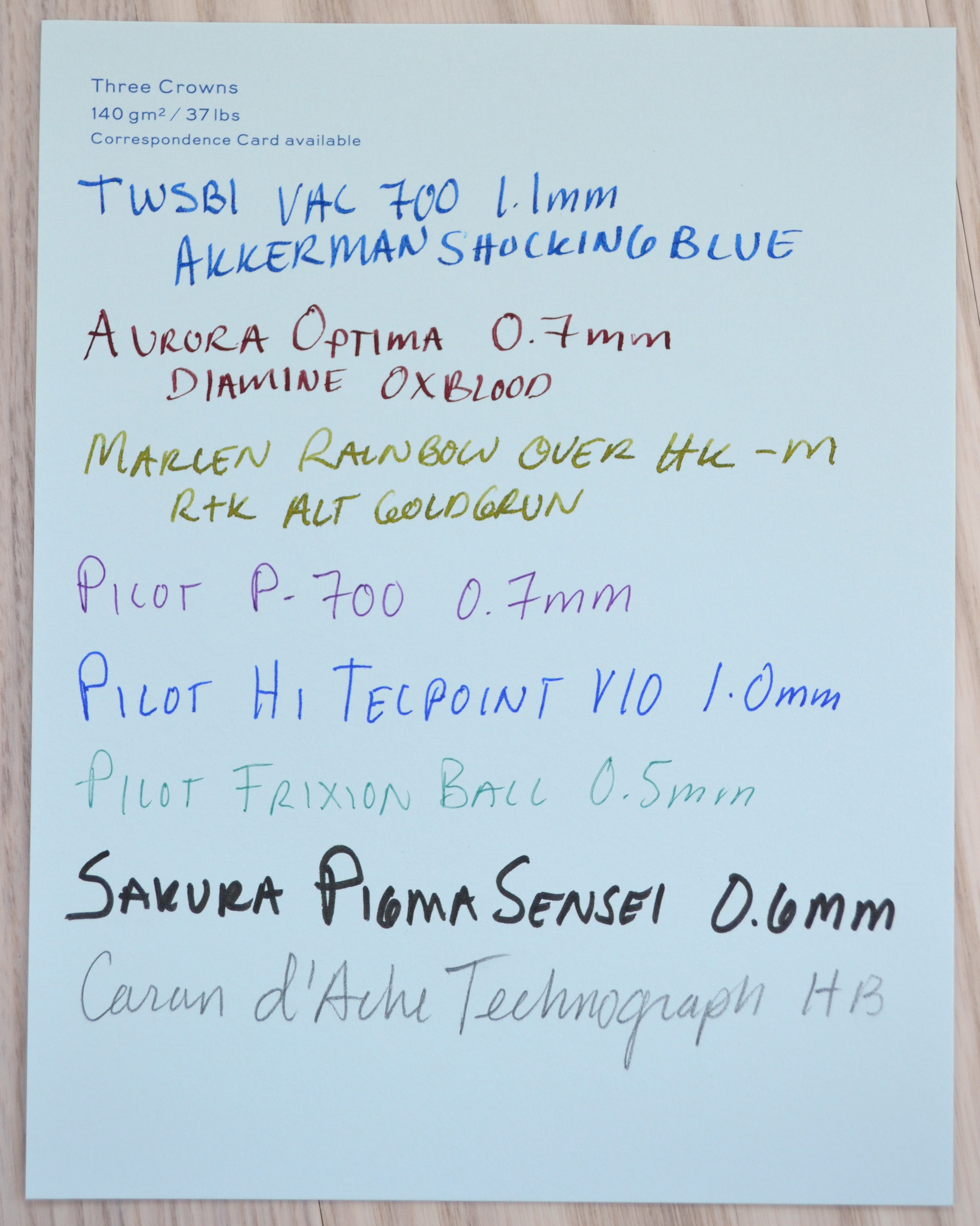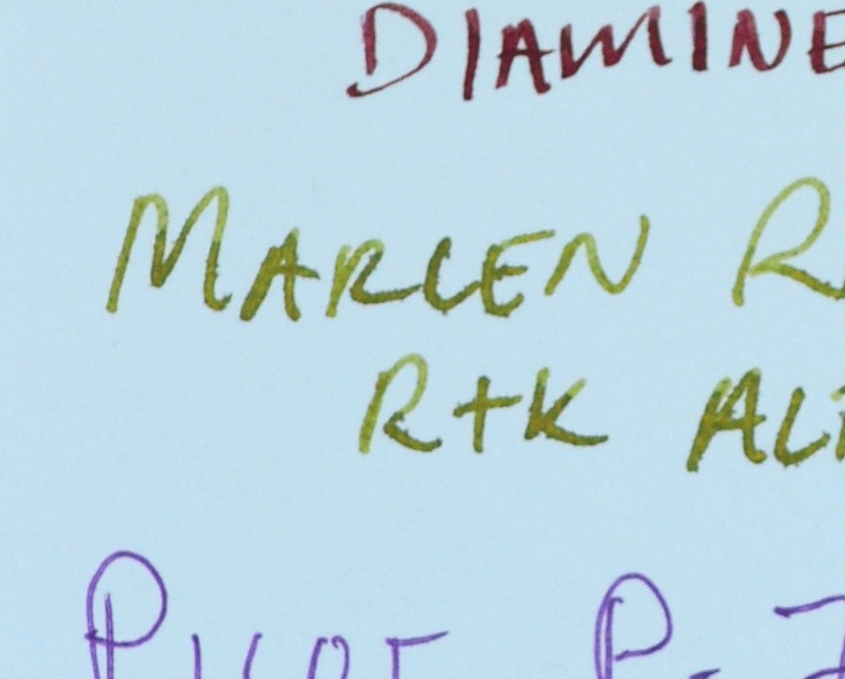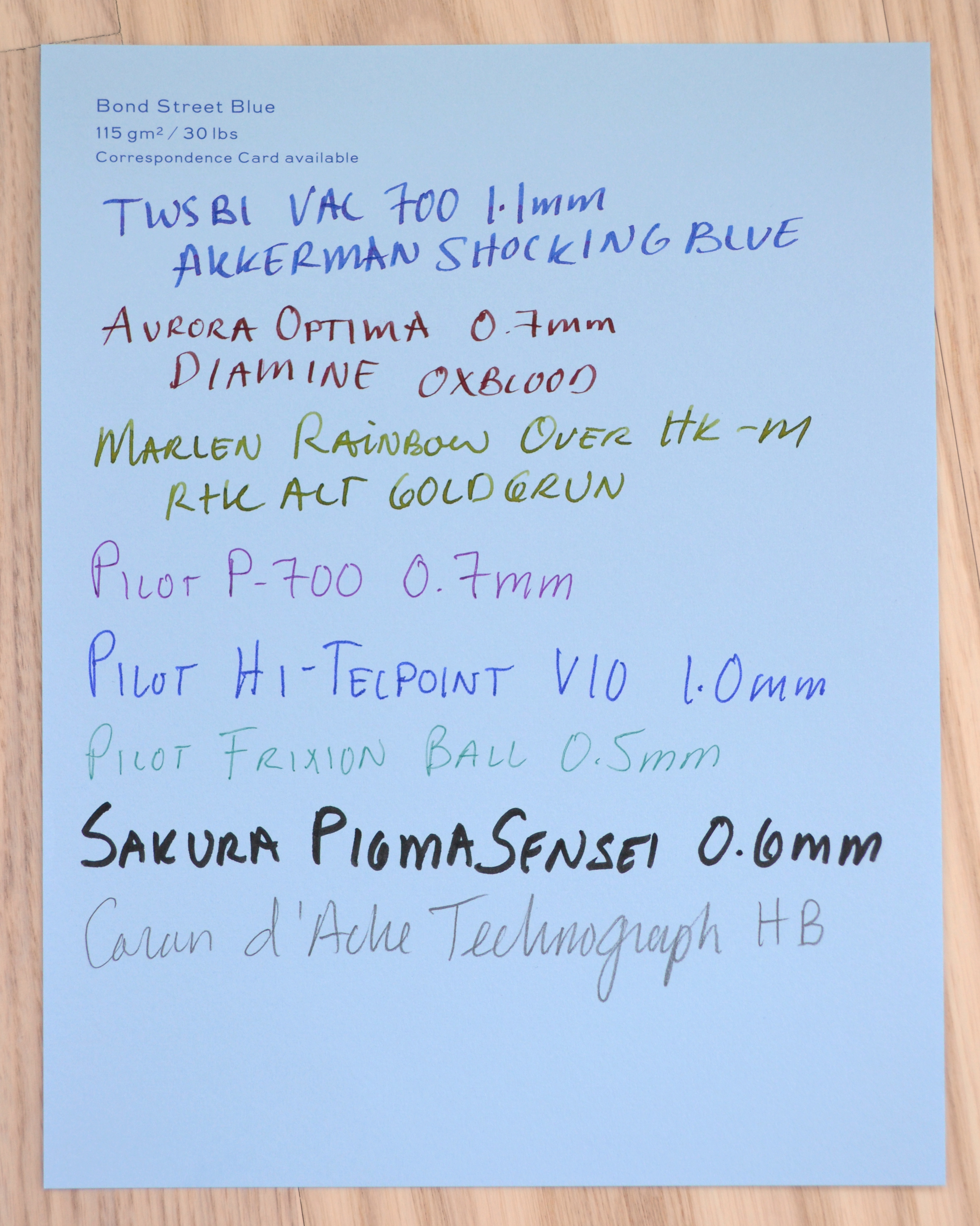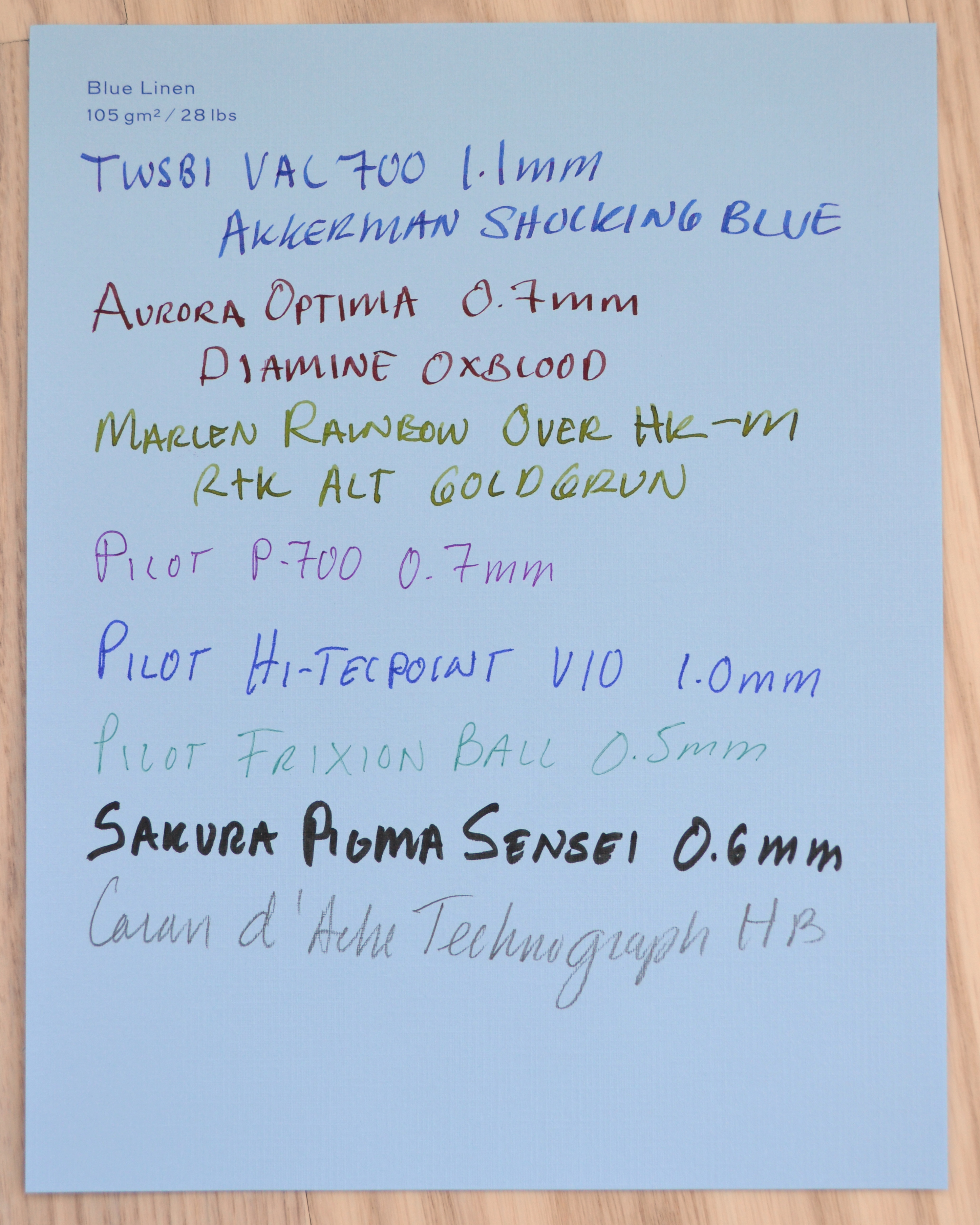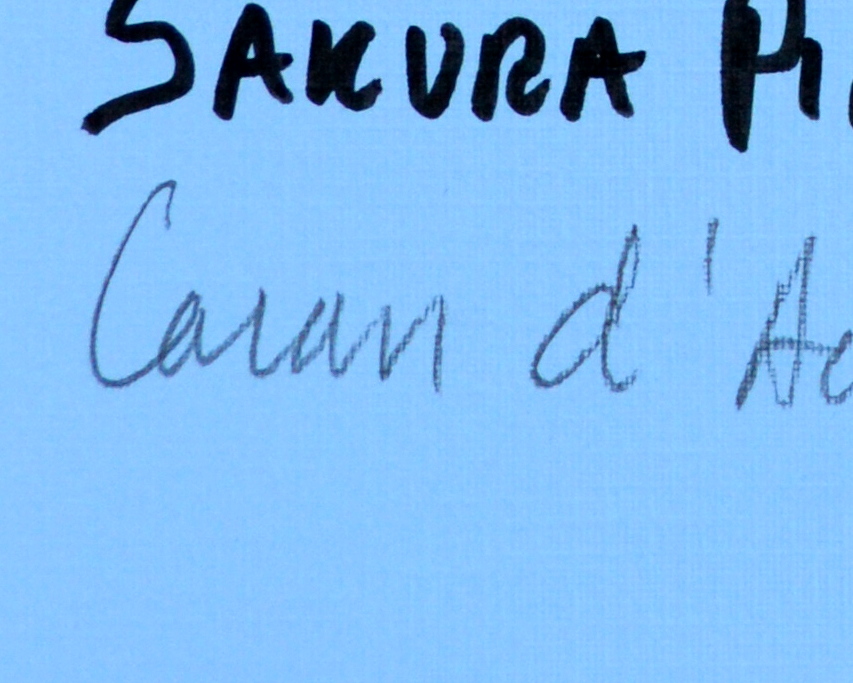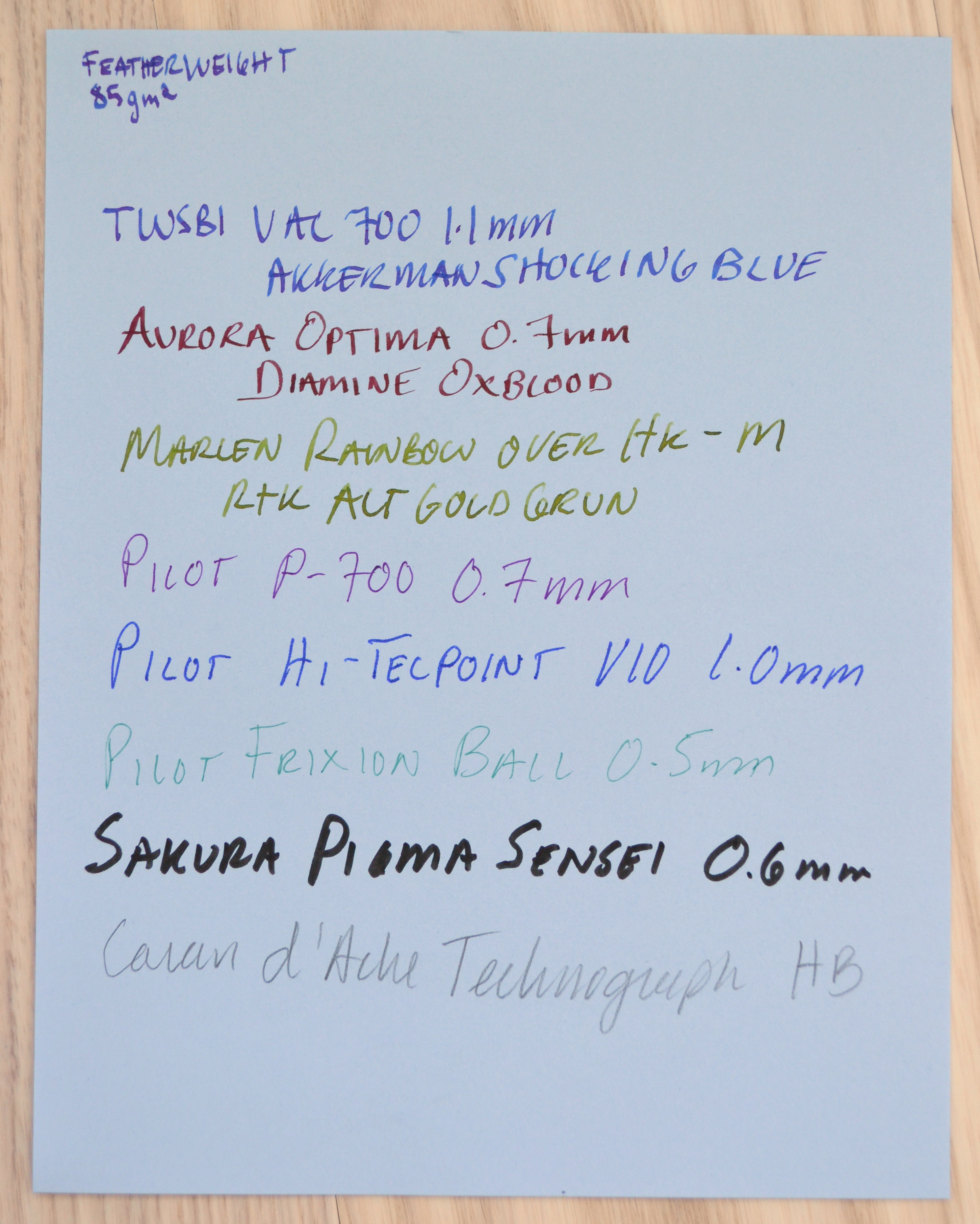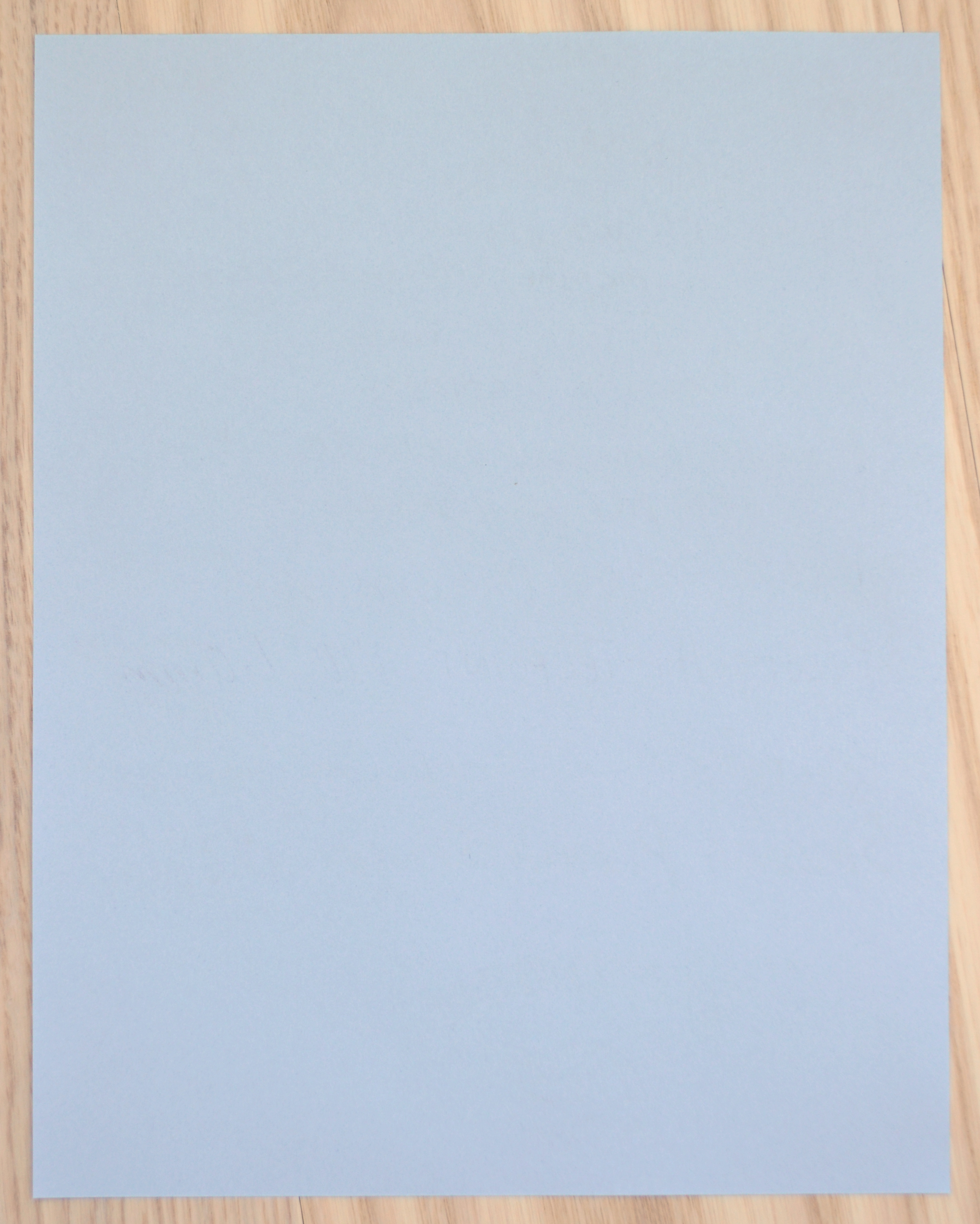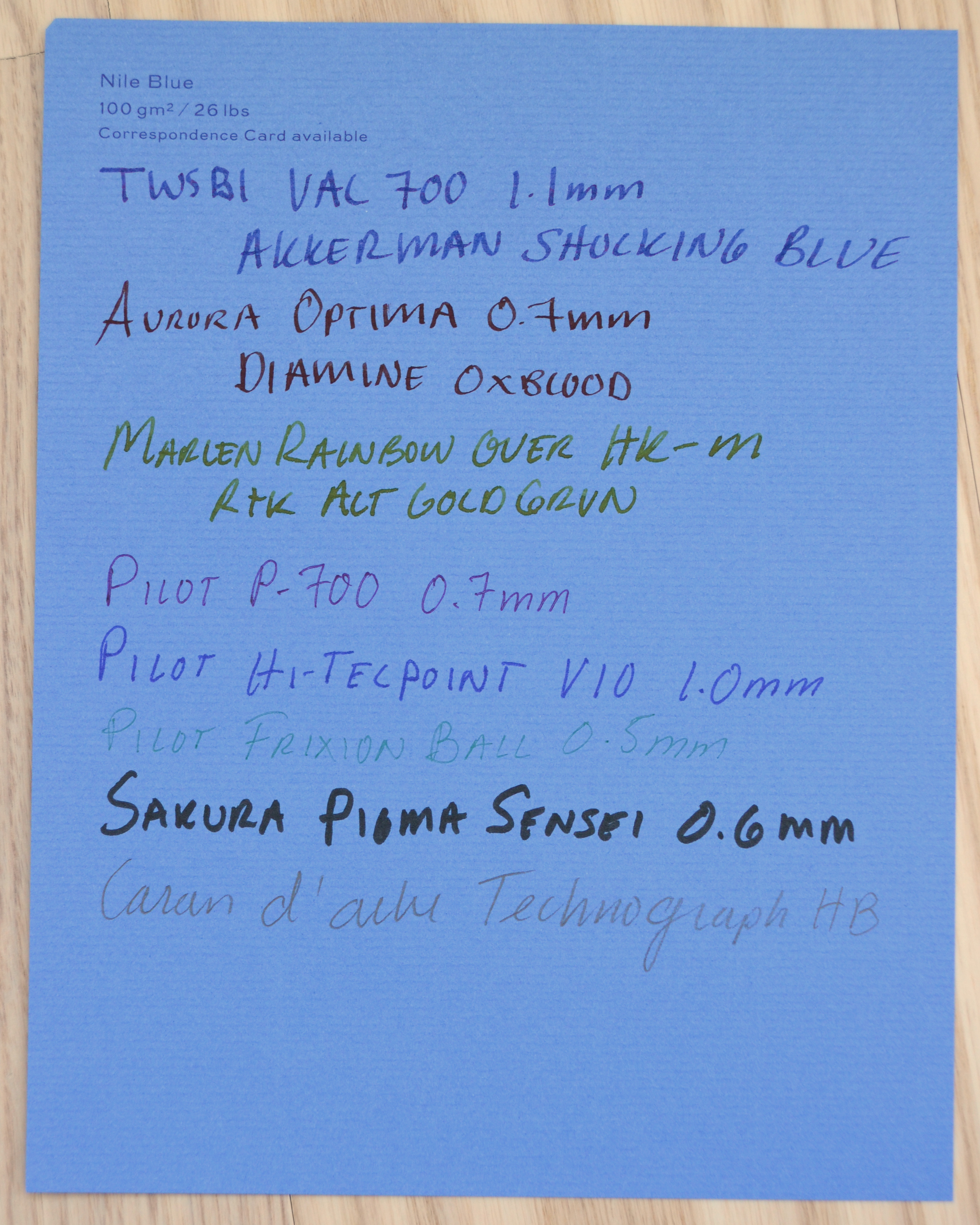In this 4K video I review the Hanaduri Edge notebook. This notebook features premium fountain pen friendly Korean paper and an exposed painted spine.
Paper
Gmund Bavarian Book Notebook Review
Gmund is one of the best paper manufacturers in Europe and while I don’t see many “Gmund” branded products, their paper is often a top choice for use in custom stationery and correspondence as well as high end business brochures and packaging.
Gmund is based in Gmund am Tegernsee, Germany and can trace it’s roots back to 1829. With over thirty product lines (each with numerous variations) there is a wide variety of offerings, everything from the high-tech to the traditional.
The book I am reviewing today is the Bavarian Book with the Vichy-Deer pattern. The linen fabric on the cover is supposed to resemble a fabric that would be used on a Dirndl (a traditional Bavarian dress).
The notebook is an A5 size with 120 blank pages (60 leafs) that are held together with a sewn binding. The softcover is flexible and the linen fabric provides a nice tactile feel.
The Gmund logo is debossed on the back of the cover.
The bright white pages are pretty thick (thicker than 80 GSM Rhodia paper) and hold fountain pen ink well with almost no ghosting. I did notice a hint of bleed-through with the ultra wide 2.4mm Pilot Parallel but for any normal point you should be just fine.
The binding is quite good and with a little use lies flat (as you can see in the pictures).
The design and feel of this notebook are standouts for me and a welcome change from the wonderful Japanese books I have been using a lot lately. The neon green deers, bookmark, and pastedown are great accents to the grey vichy (gingham) cover and bright white pages.
The Bavaria Book costs about $14 and can be purchased at Gmund’s website. Shipping is from Germany and although it isn’t too expensive, it did persuade me to order a few extra things that I will be reviewing in the coming weeks.
Stalogy 365 Days Notebook Review
Stálogy is a stationery brand that isn’t particularly well known outside of Japan. They have only been around for a few years and while their line is small, they produce unusually well-executed products.
The #018 Editor’s Series 365 Days Notebook (yes, that’s a mouthful) caught my attention with it’s detailed half jacket that highlights its unique features.
When I picked up the sample notebook the first thing I noticed was how thin the pages were. Packing 368 pages (184 sheets) into a 14mm thick notebook is impressive. For comparison, my favorite Kokuyo Century Edition notebook only fits 140 pages (70 sheets) into 11mm and with a little bit of math at 14mm the Kokuyo would only hold 178 pages; that’s less than half the Stálogy.
The next thing I noticed was the thirty dollar price tag, yikes! Naturally I convinced myself into buying it; I mean, it has double the pages so really thirty bucks isn’t that bad…right?
Apart from the thin pages this notebook features a free daily dairy. The top of each page lists months, days of the week, and numbers 1-31 so that you can highlight or circle the appropriate date. The 4mm grey grid has the numbers 0-24 printed on every other line; this is a 24 hour timeline.
I found the calendar to be unobtrusive when I just wanted to take notes but also quite useful when I wanted to keep track of my day.
The paper’s performance was very good but being so thin there are some limitations. I would consider this to be fountain pen friendly paper though with my wider nibs I did notice some bleeding and on the really wide 2.4mm nib on my Pilot Parallel there was feathering.
There is also some show through. It’s not as bad as you get on Tomoe River paper but it’s noticeable.
With the stitched binding, flexible spine and tiny signatures there is no denying that this is a very high quality notebook, one that warrants its high price.
Would I buy another one? For home use there are other notebooks I like better (like the Kokuyo I mentioned above) but if I wanted to carry a lot of pages in a small package this could be a very good choice.
Bomo Art Diary Planner Review
Bomo Art makes some of my favorite leather bound journals and when I had the opportunity to visit their shop earlier this year in Budapest I decided to try one of their diaries/planners.
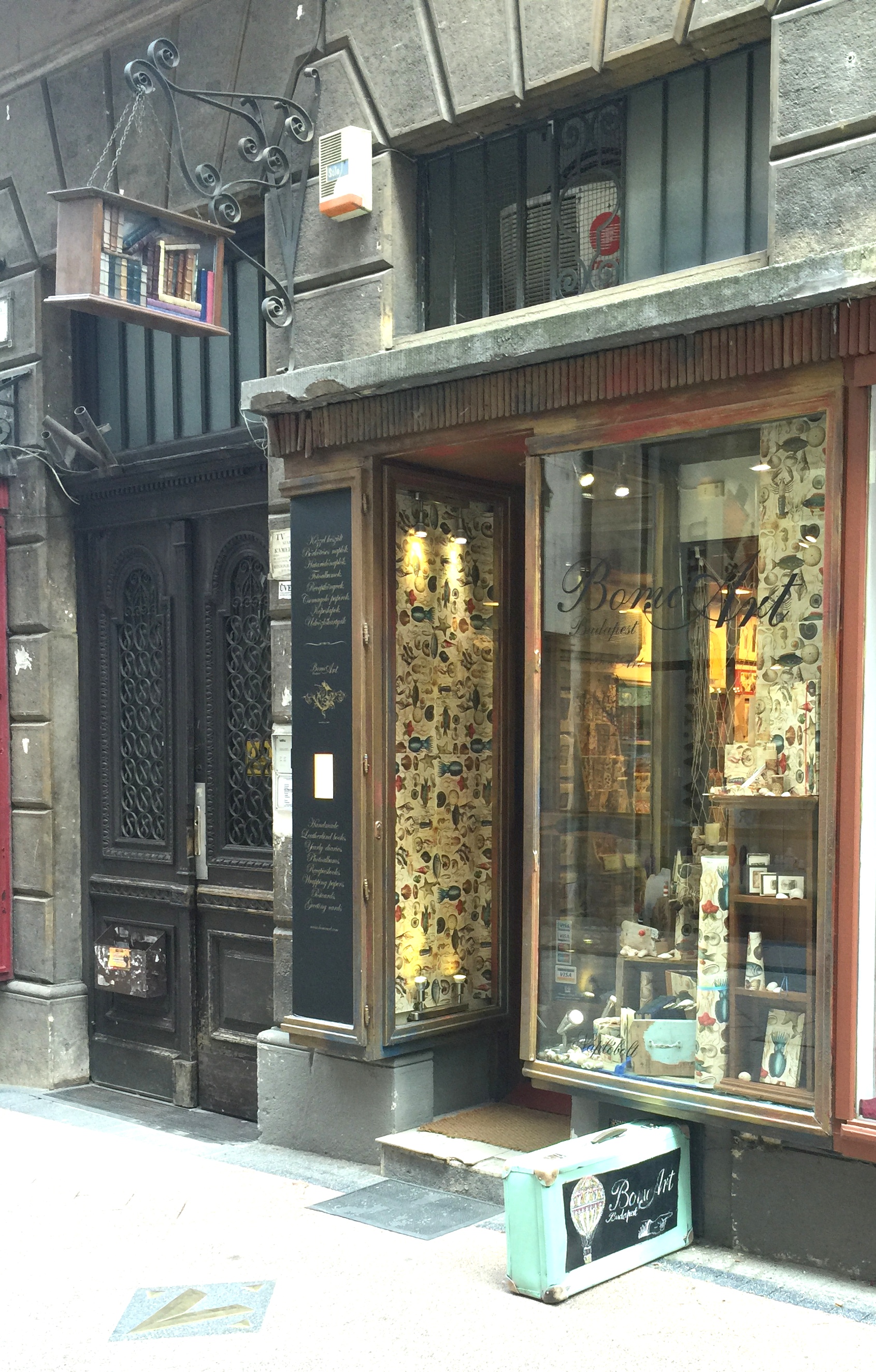
I struggle to use a diary consistently. Every year I tell myself I am going to use one to stay organized and if I am lucky, I keep it up for a few months but eventually it falls by the wayside. With this in mind I went for an A5 size half leather bound version with a weekly format.
They come in six sizes with a full or half leather binding. There are three layouts, I chose the vertical weekly layout.
You also get to chose from eight leather options, I chose dark brown, and there are numerous papers for the cover of half leather binding dairy. I chose an antique map paper.
My dairy cost about $15 USD which is a pretty reasonable price for a book of this quality.
The diaries are made by hand in Budapest with the diary contents by Diarpell of Italy.
The paper is thin but holds up very well to fountain pen ink. With such a thin page you do get some ghosting but nothing that would prevent me from writing on both sides.
The paper is ultra smooth with almost no feedback.
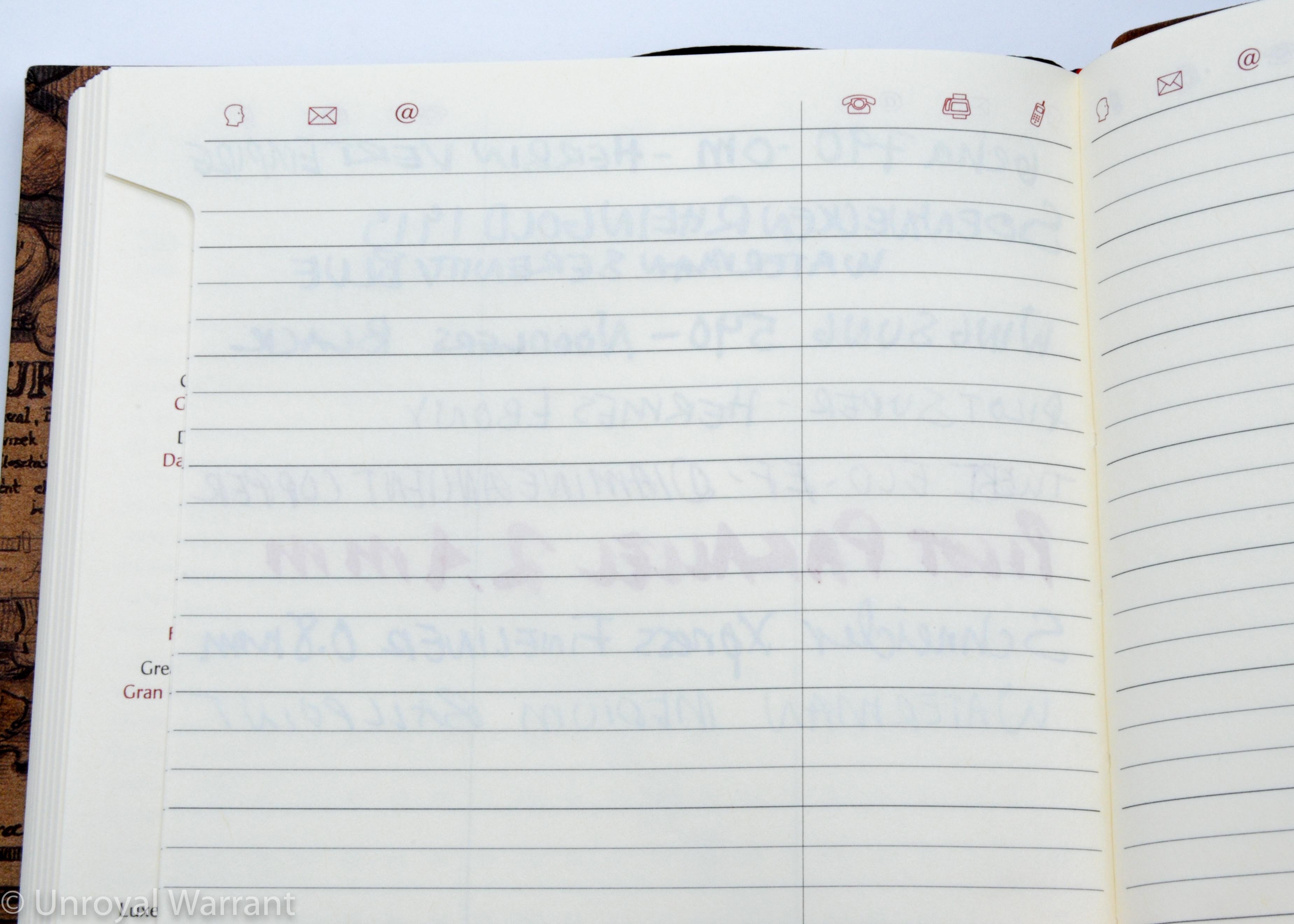
This diary layout was designed in 2000 and as such, it still has an address/phone number section. Apart from the address book this diary has no extras. There are no blank pages for notes nor pockets for loose papers.
The stitched binding is pretty nice. The signatures are not as small as you might find on some Japanese notebooks but the binding lays pretty flat so I have no complaints.
At the end of the day the Bomo Art is not a feature-rich diary but it’s beautiful looks and high-quality feel make up for it’s simplicity.
In writing this I realize I have yet to review any of their wonderful journals. It’s now on my to-be-reviewed list so stay tuned… they are beautiful.
Fabriano Secolo XIII (13th Century) Stationery Review
Fabriano Secolo XIII (13th Century) is a handmade 100% cotton paper that is supposedly produced using a 13th century “Fabrianese” paper making method, hence the name Secolo XIII.
This paper can be purchased from Fabriano’s US web boutique in a set of 50 sheets and 50 envelopes at a staggering (and oddly specific) price of $257.39.
Luckily I was in Italy a couple of weeks ago and passed by a Fabriano boutique which sold Secolo XIII in packages of 20 writing sheets.
In the store only the hugely expensive box set was displayed. I had to ask if it was possible to buy a smaller quantity. The shop attendant said yes and yelled some unintelligible Italian up a small stairwell behind the register and what seemed like an hour later a small package of Secolo XIII writing sheets arrived. The shop attendant insisted on counting each sheet. I told him I was in a bit of a hurry and not to worry about it. The pack was supposed to have twenty sheets. The attendant counts “twenty one”; he starts over and gets twenty one for a second time and still surprised at the result counts a third time, “twenty one”. He removed one sheet and allowed me to pay and I ran out of there.
So how is Fabriano’s top-of-the-line paper? Well let’s start with the good.
The deckled edges are much nicer and much more consistent than the Amalfi paper’s.
The paper has a unique texture. If you hold it up to the light you can see that it is a laid paper but the texture isn’t actually ribbed, it has a more sporadic mould made texture like Fabriano’s bottom-of-the-line (but still wonderful) Medioevalis. The texture is finer than Medioevalis but rougher their than mid priced paper, Minerva (review to come).
Secolo XIII only comes in an ivory color (the Amalfi looks white by comparison). It is quite an attractive looking paper.
The paper handles fountain pen ink well and like the Amalfi only the Pilot Hi Tec 1.0mm gel ink pen caused minor bleeding.

Now for the bad:
Despite having a finer texture than the Medioevalis, Secolo XIII has a good deal more feedback with my pens. It’s more resistance than I like. Cotton usually isn’t as nice to write on as wood pulp paper and this seems be the case with Secolo XIII.
The paper feels…well, like paper. It doesn’t have that special fabric-like hand that you get with Amalfi. Secolo XIII reminds me of a Southworth Resume cotton paper I have.
Secolo XIII is thick and I cannot use a ruled guide sheet underneath it.
Lastly, the price…it’s more than twice as expensive as Amalfi and I don’t understand why. Secolo XIII is beautiful looking but for a luxury paper it really isn’t that nice to write on…or touch for that matter.
Fabriano’s Minerva and Medioevalis papers are some of the nicest I have used and as such I had high expectations for Secolo XIII; ultimately I was disappointed. Not only is it the worst paper to write on in Fabriano’s correspondence line, it’s also one of the most expensive plain writing papers on the market. Secolo XIII is a hard pass for me.
Amatruda Amalfi Paper Review
Amatruda’s Amalfi paper is the most beautiful handmade paper I have used to date. It is a 100% cotton rag paper with a 100 lb weight (approximately 148 gsm). It is soft and in hand it drapes like a fabric. Needless to say this a very special paper.
Amatruda has been producing paper since 1390, making it one of the oldest paper mills in Europe. The Amalfi paper is a traditional handmade paper.
This paper comes in a various formats and colors and like most wonderful papers is annoyingly difficult to find in the United States. There are some good online retailers who sell this paper but the format and color options are quite limited.
I purchased a stationery set in the ivory color and it contains twenty A4 sheets and envelopes for $38. At this price it definitely will not be my everyday writing paper.
The sheets and envelopes have deckled edges though on the sheets I received the right edge seems to be a bit more deckled than the rest. I am not sure if this is a characteristic of the paper in general or of the batch I received.
The Amalfi Crest watermark is pressed into the paper making it much more visible than a normal watermark. It is very easy to feel with your finger but surprisingly I couldn’t feel it when writing over it. This paper is also available with an angel watermark.
Amalfi has a nice texture to it and I found it provided pleasant feedback.
The only pen that I tested that bled was the Pilot Hi Tec Point 1.0mm gel pen. None of the fountain pens I tried including the 2.4mm Pilot Parallel bled.
I experienced no ghosting and none of the gel ink from the Hi Tec Point came through to the back of the page. I was also able to clearly see my ruled guide sheet underneath this paper, a nice bonus for a thick paper.
Amalfi is my favorite paper to date but I am not happy with the formats available in the USA. I have only been able to find the writing sheets sold in sets and I am too cheap to pay for the envelopes. If anyone knows of a place that sells only the sheets please let me know.
Later this week I will be reviewing another handmade cotton paper, Fabriano’s top-of-the-line Secolo XIII and will provide a comparison to the Amalfi; it will be a battle of the handmade paper titans…
Pilot “Super Quality Paper for Fountain Pen” Stationery Review
This is the first and only paper product I have tried from Pilot. The cover accurately states that this is “Super Quality Paper For Fountain Pen”. 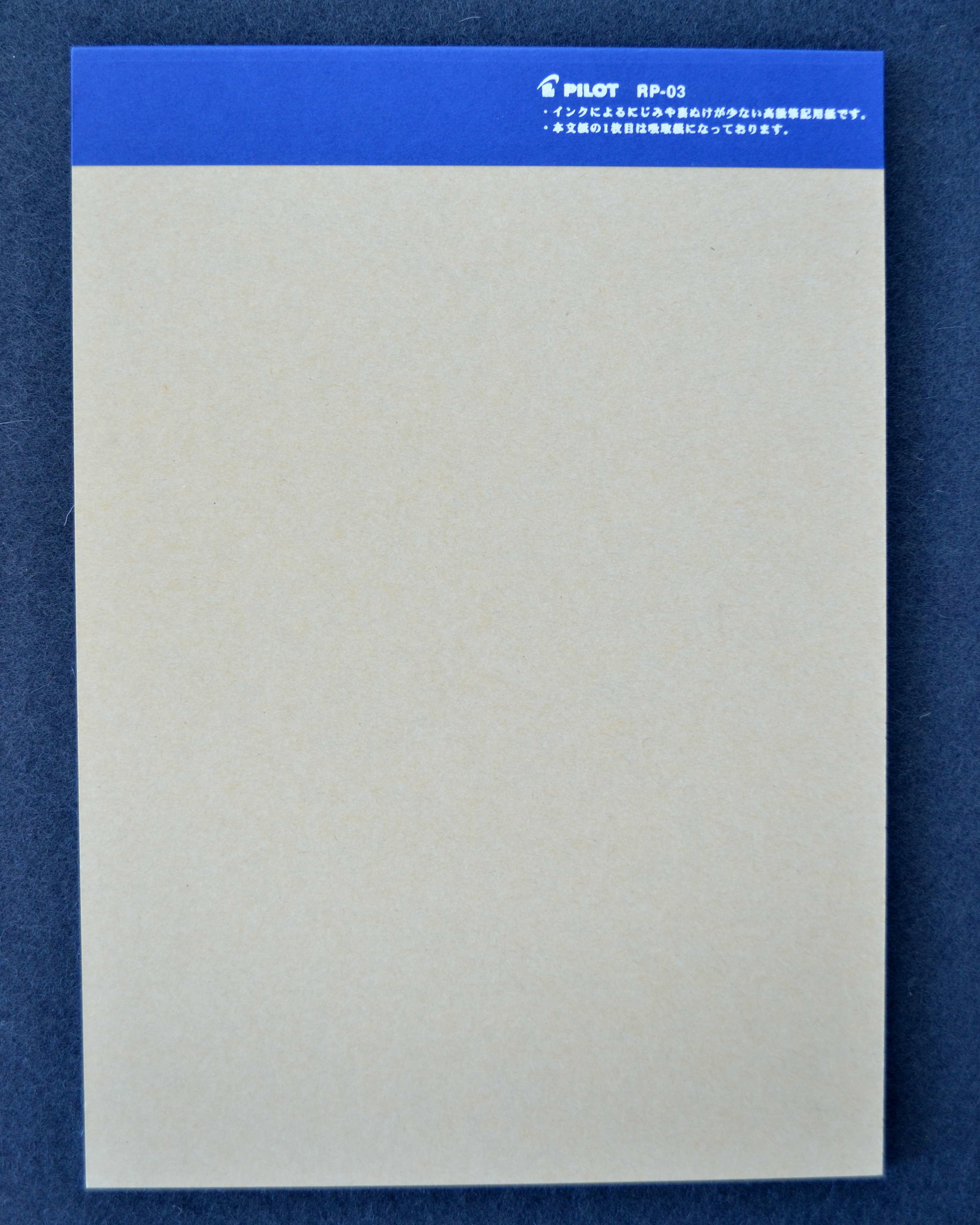
The paper is considered “semi-B5” measuring 177 x 250 mm. Each page only has fifteen grey lines making for a rather wide 12mm rule. The paper is not lined on both sides.
The pad has 30 sheets and a one blotter sheet. The paper does not bleed or feather in my tests and is quite nice to write on. The paper is on the thinner side and it’s weight is not specified but I suspect that it is somewhere around 70-80 gsm. 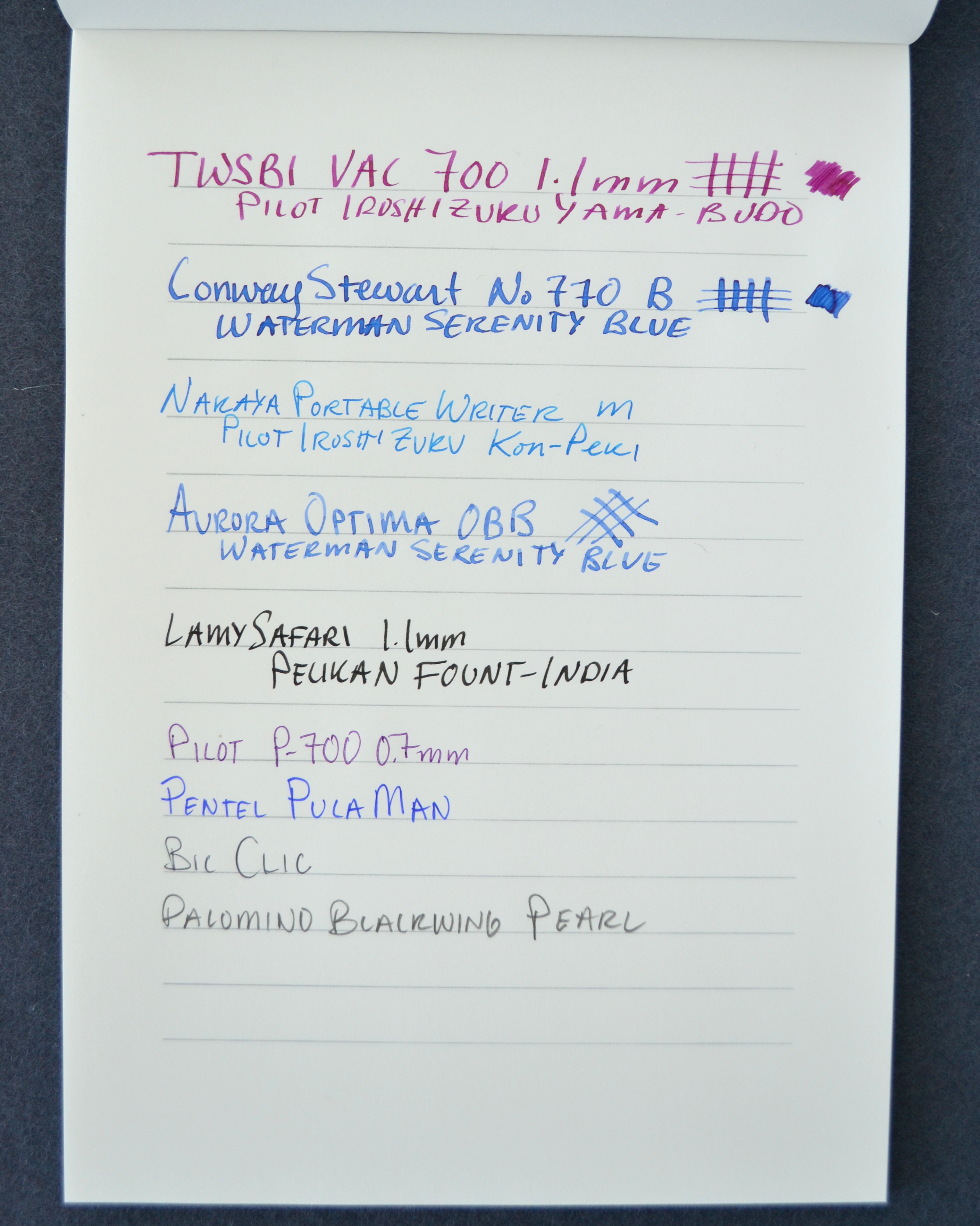
There is some ghosting but you can easily write on both sides.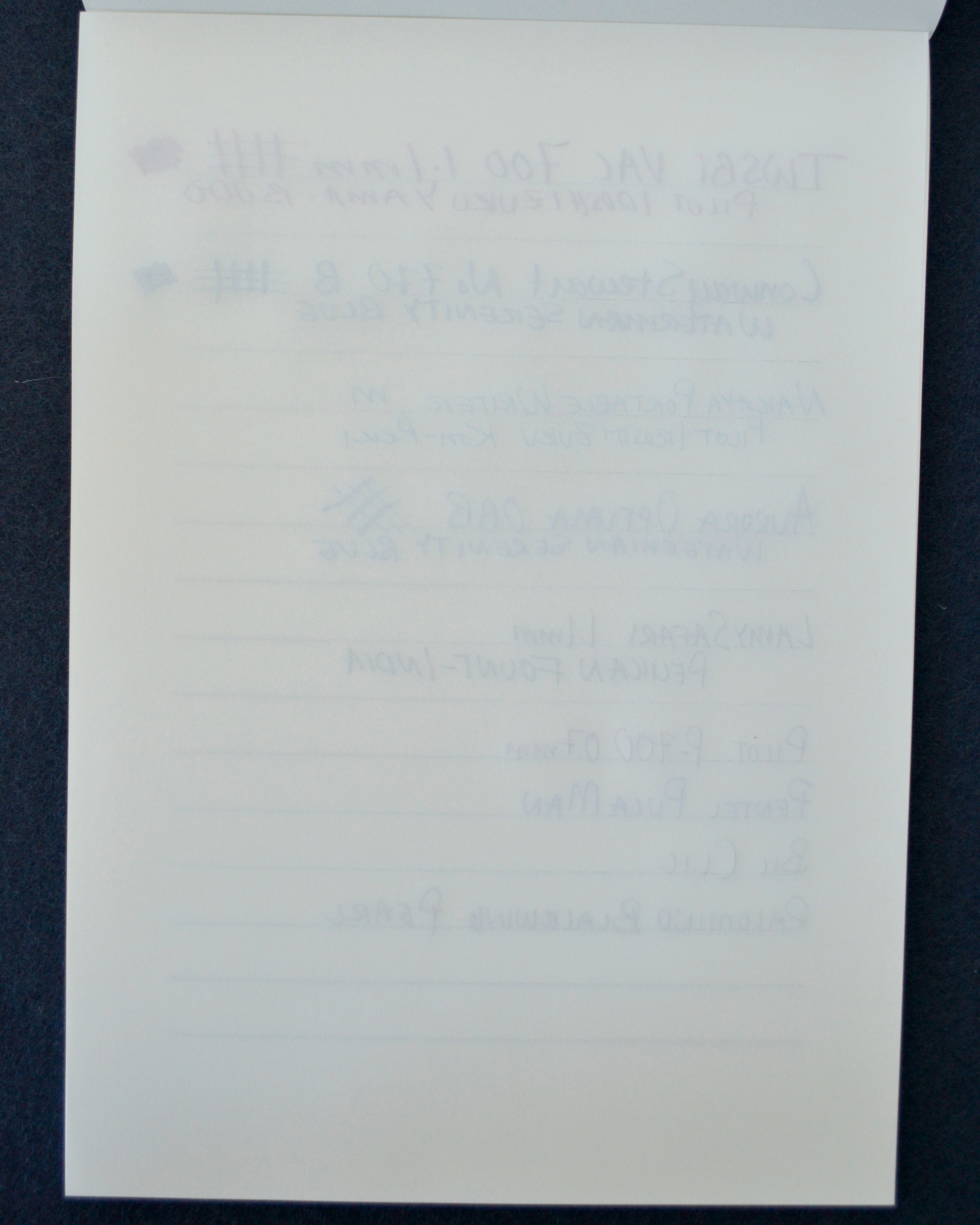
The matching envelopes come in a pack of ten and open on the short side. They have a paper lining. The paper used in the pad and the envelopes is not watermarked. I purchased these in Japan for about $7 USD for the set and at that price they are great as every day stationery. I have seen this paper for sale in some stores in the USA at much higher price and for me, even though this paper is excellent, it doesn’t have enough character to justify a price much beyond $10 for the set.
The paper used in the pad and the envelopes is not watermarked. I purchased these in Japan for about $7 USD for the set and at that price they are great as every day stationery. I have seen this paper for sale in some stores in the USA at much higher price and for me, even though this paper is excellent, it doesn’t have enough character to justify a price much beyond $10 for the set.
LIFE Bank Paper Stationery Review
Life Bank Paper is a smooth woven paper that I really like for its high quality and simplicity. They are sold in pad of 100 sheets and packages of 20 envelopes in A4 and A5 sizes. I purchased the A5.
I do not know the weight of this paper but my guess is that it is somewhere between 90 and 100 gsm based on comparisons with other papers. The paper is thin enough that I can use a guide sheet to keep my sentences straight (something I really need help with).
The pad has a nice pink blotter page. The paper handles fountain pen ink with flawless performance.
No bleed-through no feathering. The paper is thin so you do get some ghosting but it’s not enough to bother me.
The envelopes paper lined and have a very faint unusual embossing (?)
Maybe it’s a watermark but it seems pressed into the paper and holding it up to the light makes it harder to see. The other strange thing is that it appears to be printed backwards as if you are to read it from the inside of the envelope but you can’t because they have a paper lining. As a sanity check I looked at the other envelopes and they are all done this same way.
The embossing or whatever it is reads “THREE DIAMONDS”; I don’t know what it refers to. I also am not sure why they call it bank paper. It’s a simple woven paper not something that you would use for bank notes.
…anyways I paid about $7 for the pad and $6 for the envelopes when I was in Japan. I really wish I had bought a lot more of the pads because they cost approximately the same as an A5 Rhodia pad. In the United States the prices I have seen are a lot higher, $20-$22 for the pad only and that price I wouldn’t bother.
UPDATE: Mystery Solved! Thanks to Mr. Bruno Taut of Crónicas Estilográficas
I have been informed that this paper is actually manufactured by Mitsubishi, hence the watermark “THREE DIAMONDS”. According to Mr. Taut this paper’s originates from the Mitsubishi Group’s banking activities, the most visible of these being Japan’s largest bank, The Bank of Tokyo-Mitsubishi UFJ.
Smythson MEGA Review Part 3 – 12 Writing Papers Reviewed!
Part 3
(Be sure you don’t miss Part 1 and Part 2)
Out of all the Smythson writing papers my four favorites are the ones I find to be the most unique.
Three Crowns for it’s interesting but subtle color, Featherweight Blue for it’s beautiful watermark, and Mayfair White Linen and Blue Linen for their interesting finish. As I said at the begging of Part 1 all of Smythson’s papers are excellent and all are suitable for use with fountain pens.
To compliment the writing sheets Smythson makes matching envelopes. Boxes of 25 (Kings size) go for $20.
The envelopes are made out of the same papers as the writing papers.
They are watermarked and are embossed with “SMYTHSON” along the flap closure.
The envelopes are unlined and have and adhesive that needs to be wetted. I prefer self seal envelopes like the ones Clairefontaine makes.
I don’t care too much about having a matching envelope as they are expensive and usually discarded.
Buyer’s Guide
I thought I would end this third post with a Smythson buying guide designed for US customers. Buying most of these writing papers in the US is not that straight forward.
There are three ways to go about acquiring Smythson paper:
1. Purchase prepackaged writing sheets and envelopes domestically (via Smythson.com or the New York store)
This way is the easiest but the paper choices are limited. Online you will be able to buy four standard papers (White Laid, Cream Wove, Nile Blue, Bond Street Blue) in Quarto (8″ x10″) and Kings (6.25″ x 8″) paper sizes. Packs of 50 in the Kings size cost $15 and 25 Kings envelopes are $20. Shipping is from the UK via DHL at a cost of $15.
At the New York store they carry one additional paper seasonally called Park Avenue Pink. This store also carries all of Smythson’s standard sizes: Duke (5.5″ x 7″), Kings (6.25″ x 8″), Imperial (7″ x 9″), Quarto (8″ x10″).
2. Purchase directly from Smythson UK (not recommended)
To do this call Smythson’s 1-800 number and ask to talk to a UK representative at a retail store. You will be put through to either the Bond Street or Sloane Street store in London. They carry the full range of Smythson papers prepackaged and though the cost is comparable (or better with the current exchange rates) the shipping cost is prohibitive such that you need to order a good volume for it to be worthwhile.
3. Purchase through the US Bespoke department (recommended)
Call the New York store and ask to speak to the Bespoke department. Tell them you want to order plain stationery. They can order the full range of the Smythson line in any quantity. You could buy 5 sheets or 1,000 (price breaks start at 250).
50 sheets in a Kings size is $18 and 50 Imperial sheets is $23. For the $18 you pay those 50 sheets don’t all have to be one paper you could do 10 sheets of 5 different papers and the cost would be the same.
The other benefit of ordering through the Bespoke department is that shipping is free, so even if it’s an extra $3 for 50 sheets you save by not having to pay $15 for shipping.
Lastly, there are nonstandard Smythson papers that can be purchased bespoke through their Color Plan line. These papers are considered a proper custom order and as a result have a longer lead time and a much higher price. I have not had the opportunity to sample any of these papers.
Smythson MEGA Review Part 2 – 12 Writing Papers Reviewed!
Part 2
(Be sure you don’t miss Part 1 and please stay tuned for Part 3, including a US buyer’s guide)
Marston Mill Thick (135 gsm / 36 lbs)
This is a thicker laid paper that is a light cream color with a touch of green in it. No bleed through no feathering and smooth on the back. Another excellent paper with a somewhat unusual color but it’s quite subtle.
Three Crowns (140 gsm / 37 lbs)
This is a woven light mint colored paper. Compared to its counterpart, Cream Wove, I noticed some mild feathering with some of my juicier pens.
The feathering doesn’t put me off of this paper as it’s unique color.
Despite the minor feathering there was no bleed through.
Bond Street Blue (115 gsm / 30 lbs)
There are four “standard” blues in Smythson’s line but Bond Street Blue is touted as their signature color. It is a very nice pale blue. Many luxury goods manufacturers have signature colors that are often denoted by their boxes: Hermes in orange, Cartier in dark red, Tiffany & Co. in robin’s egg blue, and Rolex in dark green, etc. Smythson boxes however are not Bond Street Blue they are the darker Nile Blue…oh well.
Bond Street Blue is a woven paper slightly heavier than White Wove. Excellent performance all around no bleeding or feathering.
Blue Linen (105 gsm / 28 lbs)
Same finish as Mayfair White Linen but noticeably lighter in weight with the same feedback and feel.
No feathering or bleeding. The color is identical to the Bond Street Blue.
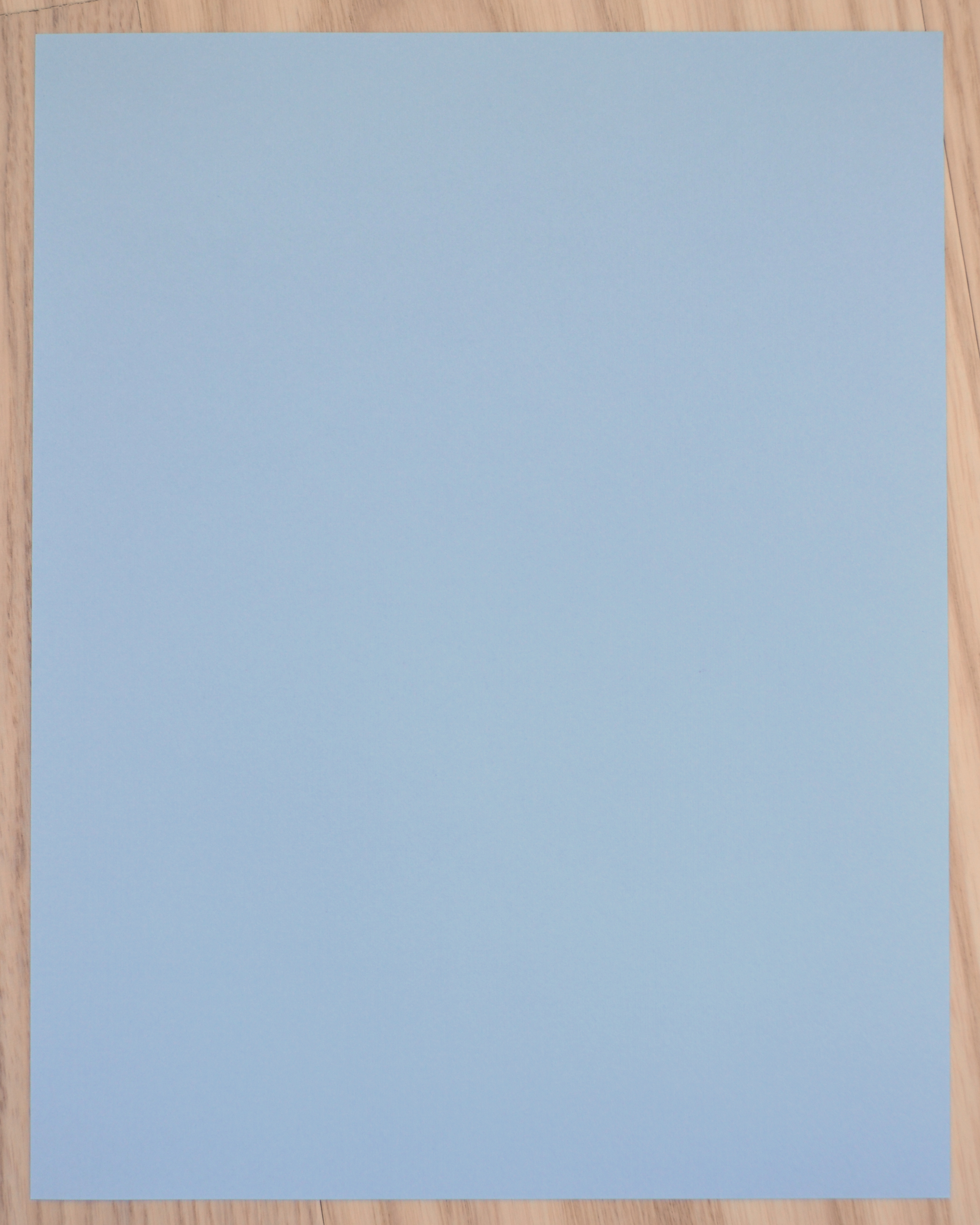
Featherweight Blue (85 gsm)
This is the paper that Smythson uses in their famous Panama diaries and in the majority of the organizers and books they sell. “Featherweight” paper is trademarked and even its unique watermark reads “REGISTERED”.

The reason for all the fuss is that Featherweight allows you to get lots of absorbent fountain-pen-friendly-pages into a diary with minimal bulk. This is less important when we are talking about loose sheets but it is a lovely paper even in loose leaf form.
The color is a pale blue slightly lighter than that of Bond Street Blue. I have noticed some color variation with this paper and when I asked Smythson about it they replied that because it is”handmade” there is variation between runs.
In my experience some batches will be a bit darker but it is always a pale blue. There is no bleeding no feathering. Compared to the heavier wove papers Featherweight has a smoother texture. It has a nice feel too it without getting crinkly like Tomoe River paper (though to be fair Tomoe is 52 gsm). For my purposes I prefer Featherweight because I can write on both sides where TR has a bad case of ghosting.
Nile Blue ( 100 gsm / 26 lbs)
Last but not least is Nile Blue (the color of the boxes). This is a laid paper in a much darker blue. Nile Blue is the lightest (in weight not color) of Smythson’s laid papers and despite this it performs as well as the thicker ones with no feathering and no bleed through. Because it is a darker paper you do start to lose the ink colors a bit. Out of all of the laid papers in Smythson’s line the ribbed texture is the most visually apparent with Nile Blue.
I will post Part 3 soon with a US Buyer’s guide and conclusion.

